
My First Week Fuji X-E1 Review… with X and M-Lenses by Amy Medina
By Amy Medina
I’ve been watching the mirrorless market evolve from its beginning. Small and light cameras have become a top priority for me in the last few years, and it was one of the original reasons I switched from a Canon 5D (the first one) to a Leica M8 back in 2007. I’m a woman who never carries a purse and who hates lugging around a camera bag, so if it doesn’t easily sling over my shoulder and fit in my pocket, it doesn’t come with me. I have always been a fan of what Olympus has been doing, but have also been watching Fuji closely.
The new Fuji XE1 is the closest thing to perfection to come along since the dawn of the eletronic-viewfinder, large sensor camera, at least when it comes to my needs. The image quality of the files is nothing short of amazing. They are sharp but natural — “film like” I’ve heard said by others. High ISO performance is clearly one of the best in the APS-C market, and it leaves me amazed at just how good it performs in low light. I’m not primarily a low-light shooter, but it’s certainly nice to be able to set the camera to AUTO-3200 — and even AUTO-6400 — and not in the slightest way be worried about too much noise. The color rendition of the files is beautiful, and the auto white balance seem to be bang-on. The hype you’ve heard about the JPG files? It’s true… with both the x100 and now the XE1, I don’t bother shooting RAW because the JPGs are just that good. And did I mention sharp? Wow, is the XE1 ever capable of producing some really sharp results, due in part to its lack of AA filter. But disclaimer: I’m not a technical person 🙂
A lot of questions about this camera revolve around the new electronic viewfinder (EVF) Fuji has put inside it. I’ve been shooting with EVF cameras for quite a while now and have become quite used to them. I will put it out there to all of you, if you’ve never shot with a camera that only has an EVF, you need to give yourself at least two weeks of steady use before you can even begin to make a decision whether you like it or not; one or two tries in the store isn’t enough. ALL viewfinder methods, from DSLR optical to rangefinder to EVF have their downsides, and to make a fair judgement you should give yourself enough time to get used to it before you decide either way. Some people legitimately don’t like EVF-only cameras and that’s fair enough, but don’t make that judgement based on borrowing a friend’s camera for a day or only trying it out at the photography counter in a store.
The EVF on the Fuji XE1 is probably one of the best I’ve used in color, contrast and clarity. It’s essentially the same one used in the NEX-7, though with lower refresh rates. Where this matters most is in darker settings. I haven’t noticed too many problems outside or in brightly lit environments. The only issue that arrises is in poorly lit spaces… this is where the slower refresh rate becomes more noticeable. In practice, with a fast lens like the 35mm f/1.4, I wouldn’t anticipate too many snags — however, manual focusing in a darkly lit environment, because of the slower EVF, might be more challenging. For me, if I’m going to shoot in that kind of dark environment, I might leave the M-lenses at home in favor of Fuji’s very good (and fast) primes.
Compared to the x100’s EVF, the color is better, resolution is clearly better, and the contrast is better. In the brightest sunshine it sometimes still requires a hand cupped over the top of the eye-piece to be able to see it best. I don’t know if EVFs are usually judged by dynamic range, but it seems like the XE1 does better seeing the difference from highs to lows. For example, when pointed at a window with bright sunshine outside, I can see the details in the shadows better than I can on the x100.
The size of the camera is nearly identical to the Fuji x100, and obviously smaller than the XPro1, but it feels solid and well-built. I went for the silver one, and the silver is a very slightly lighter color than on the x100. The little grip on the front and thumb “ridge” on the back make the camera feel great in the hand. On my x100 I have a thumbs-up, but I won’t need that on the XE1, which is good because it would probably cover the magnify wheel anyway (more on that later). Ergonomics of the camera are also similar to it’s fixed-lens cousin, with a few added buttons (like the Quick Menu button, which is well placed and a nice feature to access common settings). The AFS/AFC/MF switch is on the front of the camera, easy to access when needing to switch focusing methods. Shutter speed and exposure compensation are still in the same spots on top, along with the little Fn button for quick changing the ISO (the default setting). There is no wheel-pad on the back like with the x100, instead there are four directional buttons — and personally, I like it better; I always found the wheel-pad a little fiddly and the directional buttons feels more solid.
For manual focusing M-lenses, it’s quite easy. Put the camera in MF mode (switch on front). With camera up to your eye (or using the LCD), you can push in the mini-thumb wheel and it magnifies to 3x. Rotating the mini-thumb wheel to the right changes to 10x magnification (and back to the left for 3x again). I find the 3x much more useful for a few reasons. First, you’re seeing more of the scene, so it’s easier to get your baring on just what it is you’re focusing on. Second, in the 3x mode there is almost a “shimmer” that happens when the area you’re focusing on actually comes into focus. This is a hard thing to explain, but it’s almost as if the edges of the focused area appear over-sharpened… and it’s most noticeable in the 3x magnification mode. The 10x magnification mode is great for double-checking focus in more difficult situations, and it’s so simple to toggle between the two.
There is no focus-peaking feature. This would be a welcome addition to the camera for using manual focus lenses… However, I will say that so far, with the CV 21mm f/4, the 40mm f/1.4 Nokton and the 50mm f/1.5 Nokton, I’ve had no problems getting my shots in good focus. However, it’s important to note that the longer the lens and the wider the aperture, obviously, the harder it is.
I did not spring the extra money for the Fuji M-Adaptor… but went for the cheaper Fotodiox one. I’m not sure if it makes a huge difference as I’m not using many genuine Leica lenses, and the ones I am using are the “antiques” with lots of flaws and character. There is no button on the Fotodiox adaptor, so getting into the manual focus lens menu requires going into the camera’s menu system the traditional way (to change focal length). Also, the built-in correction options are grayed out (like distortion correction). It’s not a deal-breaker for me, but if it is for you, spend the extra money for the Fuji adaptor.
–
So far I’ve tried out a few M-lenses…. so I’ll give my impressions along with photos:
The Voigtlander 21mm f/4 Skopar
This one has been my favorite so far. I do wish it had a wider maximum aperture, but I can live with the f/4 for now. Focusing was a breeze, as expected with a wide f/4 lens. This lens has a great reputation on Leica cameras… sharp and contrasty, and quite small. It’s a great size-match for the Fuji XE1, and makes for a really nice street shooter, especially if you like to zone focus or set for hyperfocal shooting. The downside — and this is well-known on many mirrorless cameras using M-lenses, not just the Fuji — is that there can be “smearing” on the edges (due to the way the light enters the lens and hits the digital sensor at greater than 90 degrees — not something I completely understand). I knew this when I bought the lens, but can live with it for my style of shooting. If you want your photos tack-sharp edge-to-edge, look elsewhere. It’s important to note as well, from the research I’ve done, having the Fuji adaptor doesn’t makes a difference. It cannot correct for this smearing. It comes down to the specific M-lens… and some do better than others.
The Voigtlander 40mm f/1.4 Nokton
This is my favorite lens on my film rangefinder… and the focal length was quite nice on the XE1 (60mm equivalent). It’s small size was also a nice match for the Fuji body, and focusing was quite easy, even wide open. Because it’s slightly wider than the 50mm Nokton, it was slightly easier to manually focus. The 21 and 40 together make a nice kit for a day out shooting; The lenses are both small and their 31mm/60mm field-of-view equivalence is a great combination.
The Voigtlander 50mm f/1.5 Nokton
50mm on APS-C starts to get just a little long for my taste, but this lens didn’t disappoint either. It was harder to focus wide open than the 40mm Nokton, especially in very bright conditions because of the “glow” around edges that is characteristic of this lens. I did notice that bokeh was just a little harsher on the XE1 than the way it renders on my M8, which is usually buttery smooth — though in fairness, the day I was out testing the light was pretty harsh. Honestly, I’m probably not likely to use this one much on the XE1 unless I need the added focal length… the 40 was just a better match to the Fuji for me. Of course, the results were so nice, I might change my mind on that.
This one surprised me most, mainly because it’s my favorite lens on the Leica M8. I got some of that “smearing” at the edges, which I didn’t expect with a focal length of 35mm. And though it was easy enough to focus, I didn’t find the results as sharp as they should be. This lens is super-tack sharp on my M8, and performed very well on my Olympus EP2 and EPM1 the times I used it there, so I was a little disappointed it didn’t pair up as nicely with my new XE1. However, Fuji’s own 35mm f/1.4 lens is just so good, I think I’ll survive without the Biogon on this camera. In defense of the Zeiss, I was pretty short on time the day I tested it and the light has been pretty harsh all week, so take my opinion on this one with a grain of salt.
This was the last one I tested out paired up with the Fuji… and keep in mind, I expect warts and wackiness with this lens! You don’t buy a 1953 inexpensive Summitar without expecting unique bokeh and unusual flare and flaws. It was a fun one to use, and retains its wonderful character across to the Fuji camera — but admittedly for me it has a specific purpose and doesn’t get used all that often. However, its performance surprised me on the XE1 (better than I expected), so it may get more use than I originally thought!
For the Fuji Lenses
I have the 18mm f/2 and the 35mm f/1.4… and the latter will likely stay on the camera a great majority of the time.
–
I love the 40-50mm field-of-view in general and this lens performs so well that there’s honestly no reason to look elsewhere for a 35mm lens. Fuji has done a great job with it, and the reviews you hear from others on just how good it is are true. It’s light but well-built, renders smooth out-of-focus areas and produces sharp, contrasty results. My only complaint is that I wish it was just a little smaller, but it’s undoubtedly not all that large either; its light weight more than makes up for it’s slightly larger than maybe-unexpected girth. It renders in a way that reminds me of the M8 + 50mm f/1.5 Notkon, which is a good thing since it’s one of my favorite combos to shoot with.
The 18mm on the other hand, it one I wasn’t sure about when I got it. I’m not always a fan of the 28mm field-of-view as it’s just a tad wide for me. Of course, it’s very appealing because it’s got a pancake style design: very small and very light; and the f/2 maximum aperture is welcomed, if not a little surprising for something this wide. I decided to give it a chance because I enjoy the 14mm f/2.5 on the Olympus EPM1 (28mm equivalent)… and it didn’t at all disappoint.
One of the problems with the 18mm Fuji lens is that the 35mm one is just so good, so expectations are high going into its little brother. Honestly, I certainly find it easily sharp enough, and its small size and quick performance are reasons alone to give it a chance. From what I’ve read about it, you’d sometimes think this lens is a bad egg, but that’s far from the case. Though there is some distortion present, it’s quite a capable little lens, and certainly sharp enough for me.
Other thoughts…
The XE1 feels mature. I think Fuji has learned a lot over the last year from the release of the x100 and XPro1, and they’ve done a good job listening to feedback from the photographers out there using their cameras. Overall operational speed on the XE1 is good; not blazing fast like a high-end DSLR, but certainly fast enough for many of us. It’s less fiddly than the x100 (keeping in mind I’ve enjoyed the x100 immensily!), and from what I hear from XPro1 owners, autofocus speed is drastically improved with the latest firmware, which is already on the XE1 and available since September on the XPro1. I was a late adopter of the x100, with the latest firmware, and never understood what all the fuss what about with focus speed… but that’s likely because I bought it late, after Fuji had already made big improvements.
Autofocus is certainly fast enough (at least for me), though on some occasions with the 35mm lens, it had a little trouble locking on exactly what you want it to. I’d say it’s comparable in speed to the latest round of Olympus cameras when paired with the 20mm f/1.7 lens (which admittedly isn’t their quickest lens) — or at least it seems pretty close. to that, maybe just slightly faster. The biggest problem in judging autofocus speed is that some of it ends up feeling quite subjective… what is fast enough for me, is probably not fast enough for someone else. As an M-shooter, as someone who has been pleased with all the olympus cameras (back to the EP1) and as someone who never shoots sports or wildlife, in day-to-day use, the Fuji is certainly focusing quick enough.
A lot of photographers want to know whether to buy the XPro1 or the XE1 — and that’s a question I struggled with myself, especially since there are some great deals out there for the XPro1 right now. Both cameras have the same autofocus speed (when the XP1 has the latest firmware), and both have the same image quality (same exact sensor). So the differences come down to just a few things:
The Fuji XE1 is smaller and lighter. It has built-in popup flash you can even bounce. It has an EVF only, but the EVF is better quality.
The Fuji XPro1 is slightly bigger and heavier. It doesn’t have a built-in flash. It has the hybrid viewfinder for optical or electronic views, but the EVF is lower quality.
Since I like small, and since I plan to use the camera with M-lenses, I decided the XE1 was the way to go. I want all the help I can get with manually focusing, so the better EVF seemed the right decision for me. Also, having had the x100 with hybrid viewfinder, I find I never use the optical view, so giving that up was easy. I know others who swear by the optical view of the hybrid finder, so for them (or you) it might be harder to give it up. That comes down to a personal choice.
More 35mm f/1.4 Photos

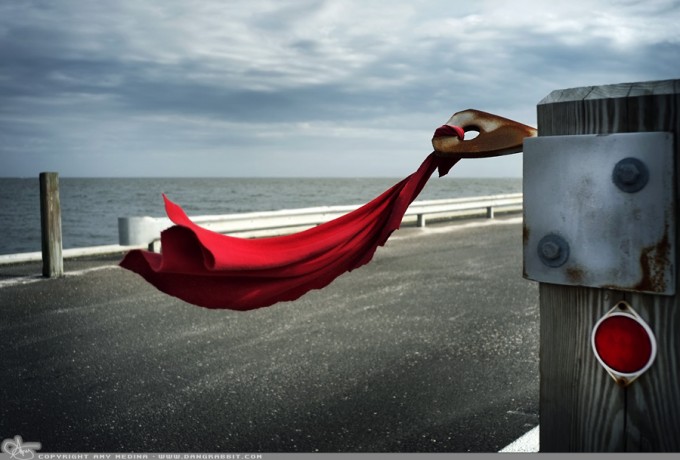
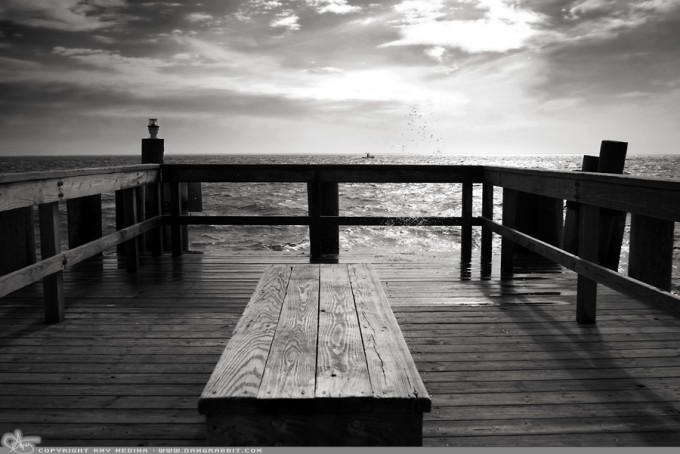
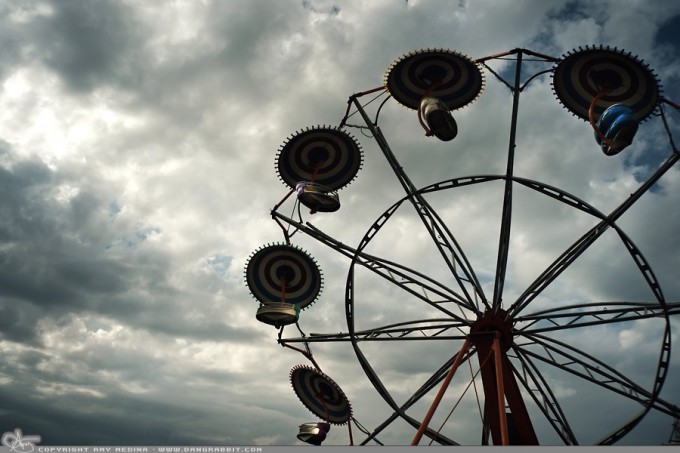
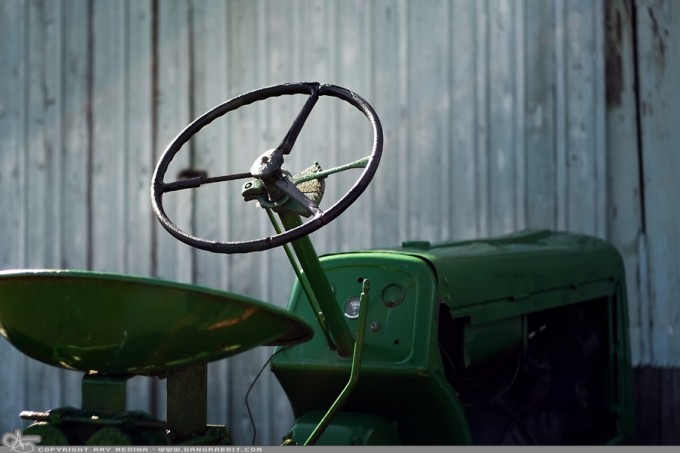
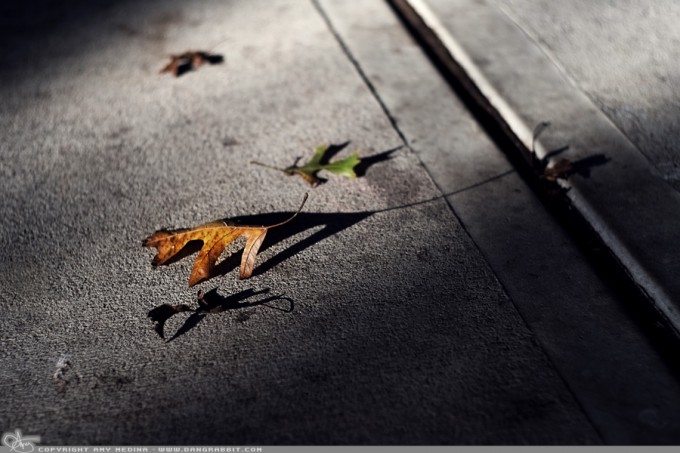
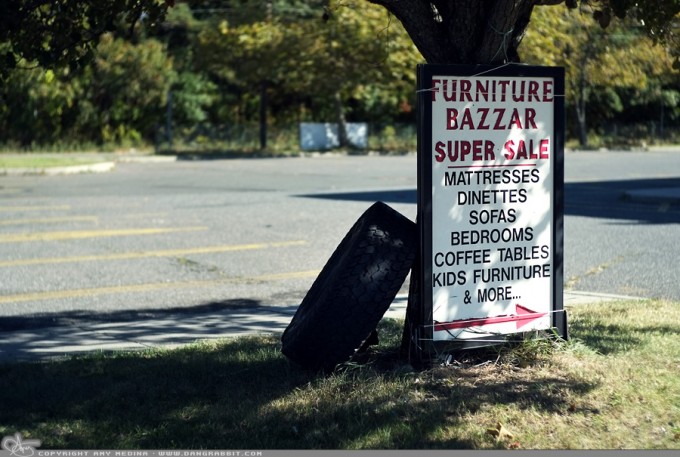
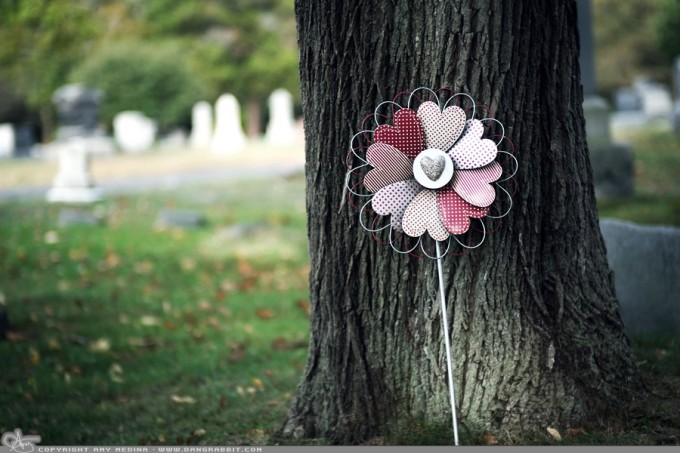
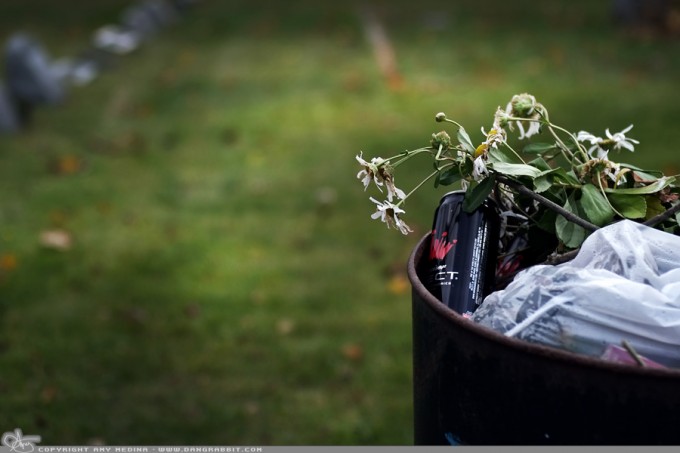
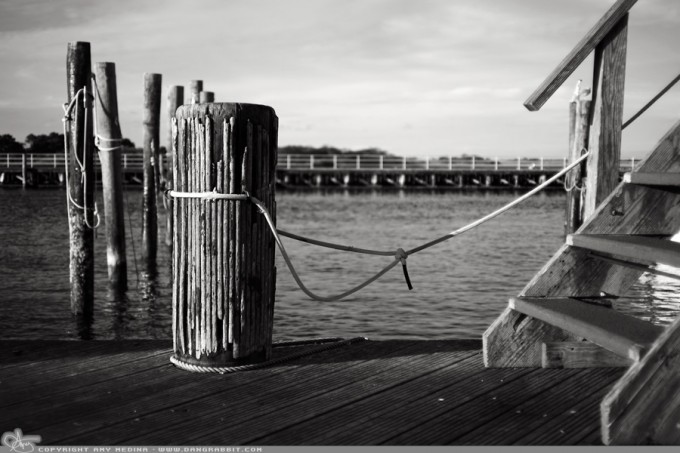
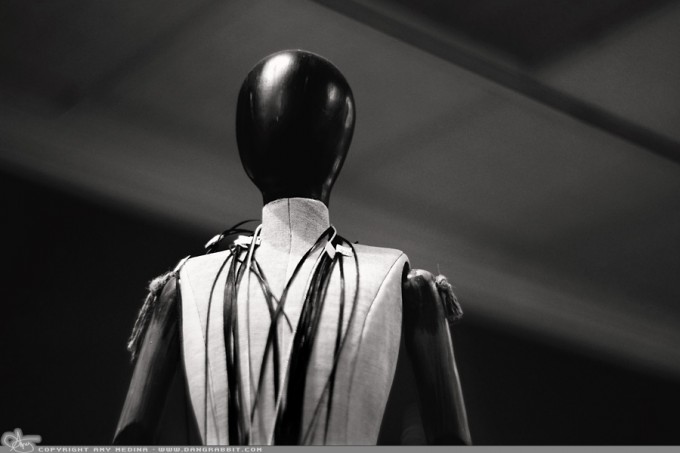
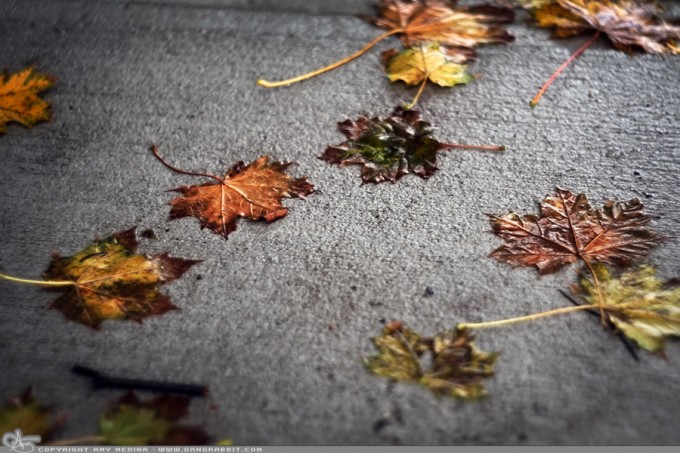
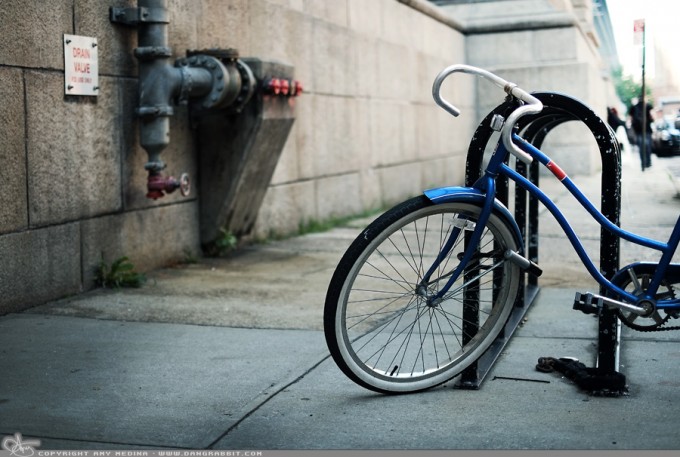

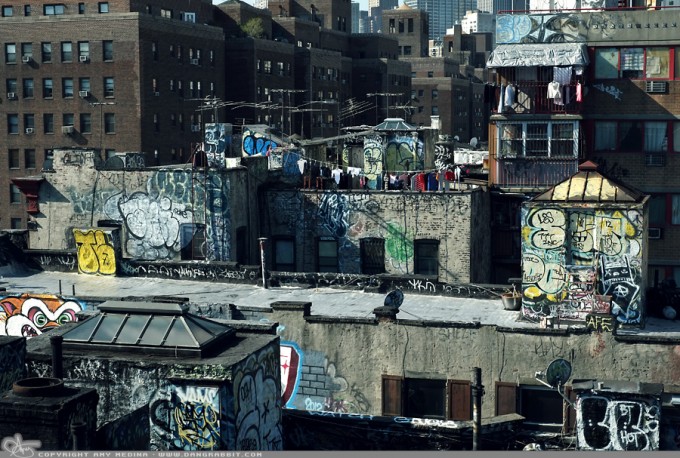
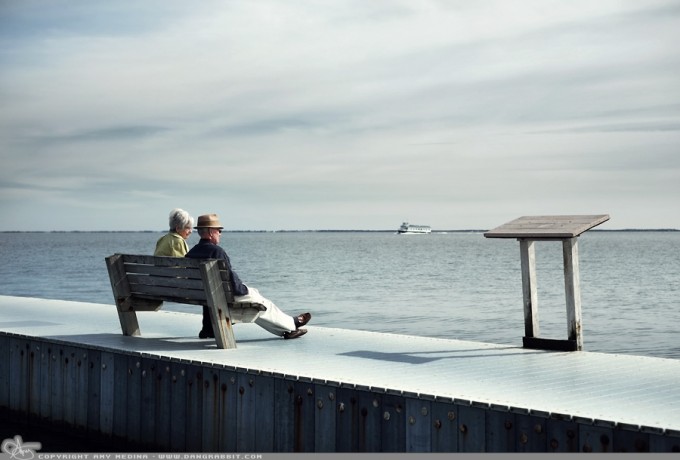
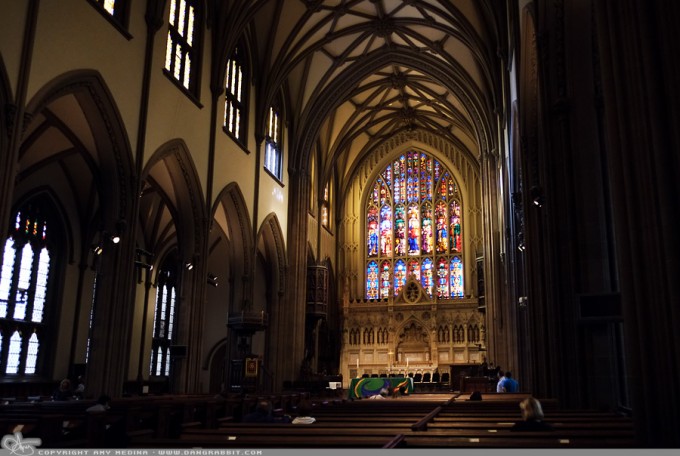
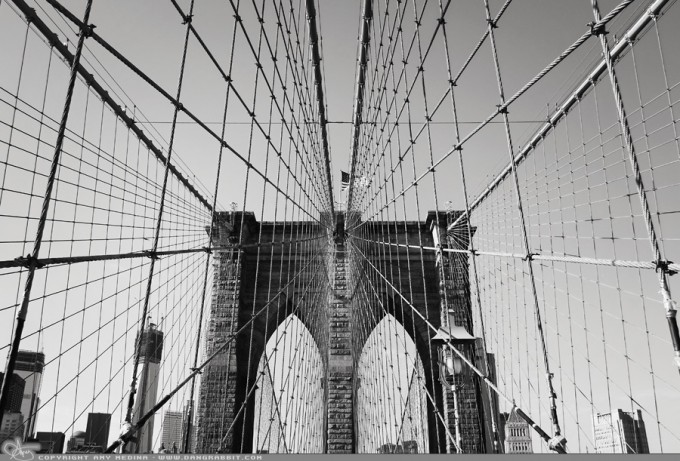
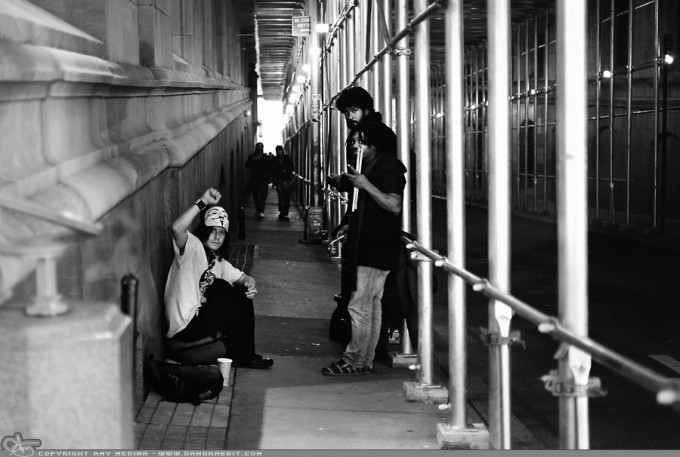
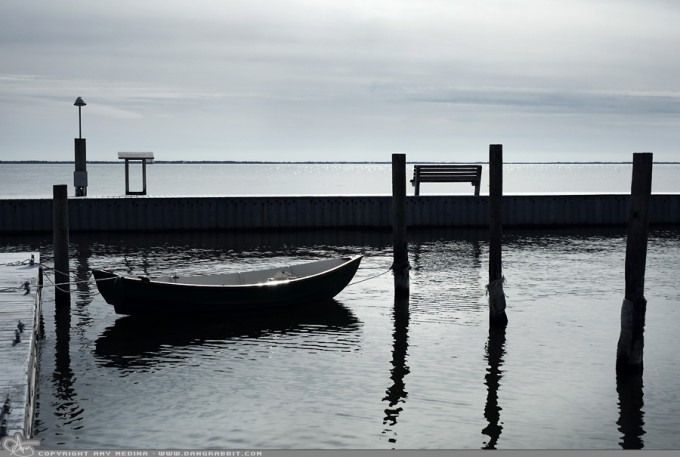

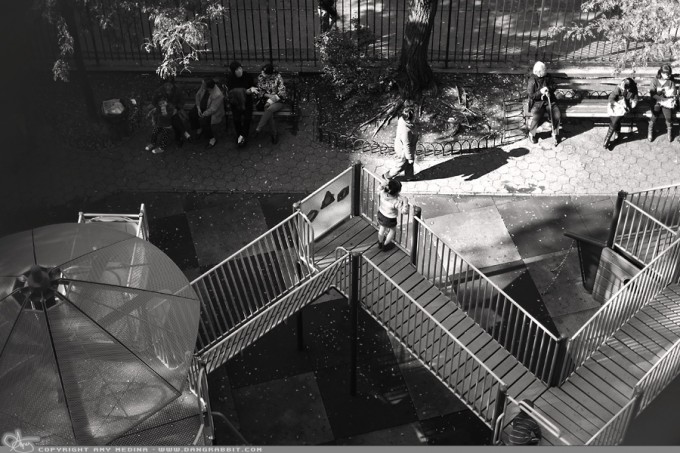

Hello Amy, have you also tried the Voigtlander Heliar 15 4.5 on your X-Fuji? Best regards & thx! H
Amy,
Cameras come; cameras go, but the essence of any image is the story contained within. You not only “see” like a photographer, your work reflects a sense of “oneness” with your subjects. This is photography. Thank you.
I also have an XE-1 and my only lens is the 35 1.4. It’s become an old friend, comfortable as my porch on a summer’s day and as worn as an old pair of jeans. It helps create images.
With the XE-2 already getting its share of the Fuji audience the XE-1 seems to get its place in the short lived and ephemeral digital bodies. Therefore it just happenned to get one as part of a trade in. First as I was curious about the capabilities of the X-Trans sensor. Second as I wish to get accustomed to a better EVF. It is too early for me to comment on the overall performance of this camera. I do not have any Fujinon lenses so I am using the camera with Leica M and R lenses. My findings for the time being:
1. RAW files conversion is a little of a problem either with Lightroom (ACR 8) or Capture One Pro 7.2.
2. Difficult light conditions are a real challenge for the camera.
3. It seems that the dedicated Fuji M adapter is a must as corrections are really needed. The sensor and the M lenses are not the perfect match.
4. The Focus Picking works fine.
5. The EVF is good enough for general photography but not good enough for a more demanding work.
6. It seems to me that there is a kind of unpleasant type of sub-noise in the files even from low sensitivities. It is rather peculiar and I really have to search it better, even upgrading to the latest software if there is one.
7. It seems to me that the Fuji XE-1 is intended for an AF , general photography use under sufficiently suitable lighting conditions, although its AWB works well.
8. Last but not least, watch the highlights. As the camera’s meter is not precise enough (checked against my Gossen Profisix and Sekonic 780) it shows under two stops at 0 compensation in the Average Weighting setting, the highlighted part will be blown out and away in an ugly manner. Measuring in the Spot mode is better.
That’s all for the time being. XE-1 is history already but it is a nice camera, overall, and I like to learn from history so I will continue to use and search the potential of this camera.
Regards,
Dimitris V. Georgopulos
Photographer at Large
Athens, Greece
Hi Amy
really found your comments on the XE1 informative and very enjoyable to read.I have bought one myself a few months ago and have found it great to use with very sharp images. I have found using an adapter from SRB with Olympus OM lenses and manual focus to be almost unusable because of unacceptable colour shifts. I wonder if any of your readers have experienced similar problems.
Many thanks.
Martin Jaye
suspect you haven’t mastered the focus trick yet.
hi,
is there a big difference between NEX 5N and XE1?
x10 WDS
x100 SAB and Banding at DR400
xf 35mm Backfocus, backfocus, backfocus….
Kit Zoom Zoomcreeping at lower temperature
xe1 Cam doesnt react at lower temperature
I got it ALL. Fuji is my nightmare.
Hi Amy!
Very informative column, Thanks! After reading your review of the X-E1, and browsing through the comments, I’m beginning to wonder if putting sample images within the review is a good idea (not just in yours, either).
The reason I say this is because until about a month ago, I would view images (my own and yours, for instance) on my relatively new Mac Air. About two weeks ago I purchased a 15″ MacBook with a retina display and had the screen calibrated. What a difference!
I guess what I’m trying to say is that the majority of the commenters aren’t looking at the X-E1’s images on the same screen, colors, resolution, etc…, as the next. So, we’re all comparing apples to apples, but they’re different varieties.
I’ve compared the Olympus EM-5 (and E-PM2) with the Fuji X-E1. Honestly, when it comes to image quality there’s not much difference between the two. The images from the Fuji are slightly softer and the images from the EM-5 have slightly more noise. With some slight adjustments in Lightroom, you can make them look almost exactly the same. Autofocus speed of the micro 4/3 camera’s is faster though. Even with the slowish Panasonic 20mm f/1.7. Maybe the next generation Fuji camera’s will be more interesting.
I doubt you have used both camera’s. Or maybe something is wrong with your technique or eyesight? The image quality of the Fuji is much better. Noise levels are noticeably lower. You can set the Fuji to auto ISO 3200 with no worries, whereas with the Olympus I never go higher then ISO800. Also, the ergonomics of the Fuji are better, unless you have miniature hands like a child.
If you are referring to the OM_D, I have shot it and have massive prints (at night) at ISO 6400 that look GREAT. You can shoot the Olympus at just about any ISO. It has a little more noise at the extreme ISO but looks fantastic. The OM-D, after having the Fuji X-Pro and X-E1 (and they went back) continues to impress me. But it is all about the glass, as always.
OM-D at 6400 at night
http://www.stevehuffphoto.com/wp-content/uploads/2012/06/P1010025.jpg
http://www.stevehuffphoto.com/wp-content/uploads/2012/06/P1010023.jpg
So your claim of ISO 800 max is not correct.
Yeah, you can set the Fuji X-E1 to auto ISO3200, but images will look soft and somewhat in-camera processed. Images from the Olympus are more detailed. I’ve used and compared both (please don’t doubt that). In the end, you don’t win much with the slightly larger sensor of the Fuji. Also, the Fuji is a lot less responsive then the latest Olympus cameras. Let’s face it, even with all the firmware updates, it’s still a dog. When you press the body with you right thumb slightly, the plastic bends! I think that’s not very cool either.
People have their preferences but the fuji is a fine camera and is capable of taking stunning pictures. I am quite sure that the omd is a very capable camera also. Really when you look at the differences in picture quality I am sure that there is not much between the two camera’s. When it comes down to it the choice of camera is more than just IQ, for example handling is very important to me, I am sure that others have their priorities.
What we are talking about here are the differences at the edge of camera performance. Sure, if we all shot in the dark all the time then the quality of picture at ISO 3200 and above would be of prime concern. Since time shooting in low light is a relatively small part of my shooting, I would rather look for a camera that has great IQ but also suits my shooting style and has the features I want. I tend to shoot Nikon, not because Nikon are better than any other camera, it’s because I prefer the ergonomics and features.
Amy, wanted to ask what you think of the X – E 1 as a camera for capturing indoor school events like plays and concerts and indoor sports events at a school gym. Usually the lighting in these venues is a mixture of flourescent and incandecant lamps and flashes are not allowed. Also the camera needs to be pretty quick.
What are the pictures like if one uses this camera on full auto ?
Hi Amy.
May i say that this is a very good and well thought out review with lots of hands on information.
May i also say that your attention to the posts and dedication to answer so many questions yourself is admirable.
Well done
That last comment should have a 🙁 not a 🙂 Sorry!
Fantastic that people are still talking about Amy’s article nearly 3 months on! I just bought an XE-1 with 18 & 35 lenses today, partly on the back of this review. I really enjoy Amy’s images and the thought of using old Leica glass is intriguing.
I feel a bit spoilt in that I also have an X100 and an OM-D, but the truth is that one of them is probably going to have to go, for money reasons 🙂 Not sure if I could live with myself if I sold the X100, but damn, I’ll probably kick myself if I sell the OM-D!
Congrats. I am still loving the X-E1 a good few month’s in. I think I am using it more than my dSLRs at the moment.
Thank you for your great review and beautiful pictures.
This has to be one of the most enjoyable reviews I’ve read so far. I’m just new in this photography world and I try sucking up as much information as I can. Your review didn’t necessarily give me any new info about the tech but it was so mesmerizing to read while watching the stunning photos and I really felt an urge to grab my camera and just go out and shoot the world. That’s what this is all about in the end isn’t it? To feel, wake the emotions and just live.
Hi Amy, Steve
Love the blog! Awesome resource! And thank you for this great review.
I have a question, I am so so tempted by the XE-1 🙂 but would like to also shoot with the M-mount adaptor and 50 Lux ASPH (which seems to be compatible with the adaptor (http://bit.ly/KSNh6M). Would love to use it as portrait lens next to the 35 1.1 fujinon.
Looking at the info on the Fuji site (http://bit.ly/Kjws8k) it talks about image correction settings – distortion correction, peripheral illumination, color shading – as part of setting up a m-mount lens. Question is do you know the correct settings for the the 50 Lux ASPH? Have you found a source somewhere else that can help me set up the lens properly?
Thank you for taking the time!
lightroom 4.1, but will upgrade to 4.3 and see how it goes.
The forums arent encouraging… http://www.fujix-forum.com/index.php?/topic/6868-lightroom-43-is-out/
Amy, thanks for your review. I love my Fuji X-E1. When I made my purchase, I compared it with the X-Pro1 and the Sony RX-1. Price was not a consideration for me. Image quality, low light performance, dynamic range, user interface/usability and versatility were the main points I compared. In the end, the X-E1 won out in my mind. The internal flash, EVF, user interface and ability to change lenses were deciding factors over the Sony RX-1. Boy am I happy with my choice of the X-E1. It is a great camera. I shot 300 images yesterday, indoors – under moderately low light. It never once hunted for focus or mis-focused. ISO’s as high as 6400 look great. Absolutely amazing! Also love the film type bracketing feature. Only issue is that Adobe LR is still not doing very well with the Raw files, but the camera-produced jpegs are unbelievably good – they need almost no adjustment.
The RAW issue fair peeves me.
I have Lightroom 4.3, Photoshop 6 and Elements 11 and do not have any problems developing the RAW files. Which software are you using?
take a raw open it with silkypix, and zoom in, do the same with the lightroom 4.3 and you will see a big difference in the details !! the details are just blurred with lightroom.
Thanks, I will give it a try.
There a small round button in front of the camera just by the lens. You have to turn it to select “S” as autofocus mode, instead of “m” as manual mode. You could also check that “Shoot without lens” in the main menu if Off.
Let me know if it works
Does anyone know what the original settings are for this camera? I have been playing around with it too much and now when I hold it up to aim it doesn’t adjust it’s focus and remains blurry. Help?
I was doing a lot of post processing before I bought the Xe1: photoshop, alien skin…. Now when I see the kind raw i get from the Xe1 I don’t dare anymore to retouch my pictures I really do a minimum. What I get is just so beautiful and I don’t think I just became a better photographer in only one month, so I guess it is the camera.
I can’t decide between the
Sony RX1 or the Fuji XE1.
I am tired of the big SLR and looking for a high quality smaller camera. The Leica mE is also an option. The price range is all over the map!
I would recommend the X-e1, the pictures that are produced by this camera are outstanding. The whole experience of taking pictures with the X-e1 is effortless. one aperture dial, one shutter dial and one exposure comp dial is all that’s needed.
Leica ME > RX1 > XE-1
Own the RX-1 and owned the XE-1. I agree with steve that in terms of FF, IQ, AF the RX1 is better. However, gotta get used to the fixed lens. I love it. I assume you can pay for the RX-1 since the ME is in your cards.
Having said that, if you want IC lenses, get the OM-D over the XE-1.
The RX1 is going to give great picture quality for sure, but I am not convinced that I would want to be restricted to a single focal length. I would take slightly less image quality for a more versatile camera. Each to their own though.
Pictures look absolutely amazing. Fuji Really did a great job with this sensor. Who needs Full Frame when you got a APS-C Sensor that is more than Capable of producing wonderful Images. Comparing this to the RX1 I would say that is a much better value for the money that will probably be able to produce images that are very similar to the RX1. I also feel it has more vesatility. Although would be nice if they made Telephoto lenses for it. Like a 18-200 would be nice. I don’t own this camera nor do I own the Rx1. I just feel that it has more to offer for less money.
Thank’s for this review… very interesting.
I’m just a little bit disapointed with your results with the 35 mm Zeiss Biogon. In fact, I would like to purchase this camera with this lens (that I don’t own yet). Why? Because I like the 3D effect of the zeiss; and this lens could be usable on other camera if necessary.
But according to your results, I don’t know what to do.
Do you think it’s crazy to buy this lense for this camera (rather the Fuji 35 mm)?
Thank you very much
I’ve bought both Fuji XE1 and Zeiss Biogon 35 mm f2. The results are very very bad for landscape. So, I can’t recommand this one for Fuji XE1. For this reason, I’ve taken Fujinon 35 mm instead of the Zeiss…
The lens design of the Biogon 35 is specific (extrapolated from on a symmetric lens design), it works perfectly on Leica’s (maybe the sharpest 35 out there) but pretty poorly on other cameras such as Nex or m43 or Fuji which sensors are not designed for M lenses.
The fuji is ABSOLUTELY as sharp as the Zeiss. I can understand using the biogon if you already have one, but in terms of sharpness it would gain you nothing- even if it worked perfectly on the x pro or xe 1.
Thank you, Amy, your review is nice and very useful. I love your images…
Please, can somebody tell me how the EVF of the E1 is compared to that one of the OMD EM5 ??? And what about the performance of the EVF (E1 and EM5) by night??
Thank you !!!
I cannot give a comparison between the e1 and em5, but I can say that the evf of the e1 is bright, sharp, works well in light and dark situations. I have been shooting with slr’s for years and have never used an evf before the e1 and I am finding it perfectly acceptable in day to day use.
The one thing I would say is that there is some lag when panning; for the shooting I am interested in this lag is not an issue.
Overall I think the evf gives a very detailed view of the world with no pixelation. There are some videos on youtube that show the evf if you want to see for yourself (search for fuji x-e1 evf).
Thank you, Mark.
I had few moments the X Pro and I noticed that freezing effect you mentioned as lag in the EVF. So, despite the highger resolution of the EVF, E1 and X Pro share that aspect…
The last week I had in my hands the Olympus and its EVF worked very good at least with good light (inside the store)..But if I shoot by night…???????
I must say I have not tried using the X-e1 for ant true night time street photography, but I just popped for a walk with it (it’s fully dark here) and used the viewfinder under street lighting conditions and there is a little bit of pixels in the evf (a tiny amount), but I have to say that the viewfinder is still bright and detailed. I do not think night street photography would be a big problem for this camera. Obviously the optical viewfinder of the X pro 1 would be an advantage in very dark situations but the X-e1 seemed to do a great job.
Ps excuse the spelling, typing on my tablet sometime leaves a lot to be desired)). That should have been ‘any’ and ‘pixelation’.
there is something really great with this Evf: you can use it with glasses with was not the case with Fuji X100 and X pro 1. That’s a really a big improvment for me. The quality is also really good, I have not problem to manual focus with my Summitar.
Thank you, Amy, your review is nice and very useful. I love your images…
Please, somebody can tell me how the EVF of the E1 is compared to that one of the OMD EM5 ??? And what about the performance of the EVF (E1 and EM5) by night??
Thank you !!!
Over the past three months, I’ve traded in some lenses and a few SLR bodies in return for lighter, faster, less clunky gear. I’ve just decided to go for it with the Fuji XE-1 and suddenly found myself raising my game in a big way. It’s amazing how, when you pay decent money for decent gear, your skills suddenly take on a new level.
All the best, Colin.
Amy,
Looking at the image quality alone is reason enough to purchase this camera. I use Nikon DSLRs for events and personal ‘hobby’ photography but have been looking for a camera that is more discrete for street photography or just when I do not want to ‘lug’ around an DSLR, I think this might be the one. I love to hold the camera up to my eye, I find it a much more engaging way to take a photograph. I do not like standing with my arms out in front of me using a LCD to compose my shots, yuck!
I have been lusting after an X-Pro 1 for a while but when I saw this camera was on the horizon I held off buying. Then I had a dilemma, EVF vs OVF and which is better, which would I prefer to use, is the OVF worth the additional cost? Humm, my current thinking is that I can do without the OVF and the EVF will work for me.
I like your pictures, btw. Keep up the good work.
Thanks for the review
I can’t find the post (it’s late…), but I am responding to the person who was concerned about using the fuji for outdoor and HDR work. I am not an expert in either, but find myself preferring my Fuji S5 over my Nikon DSLR’s due to the fabulous dynamic range and color rendering of the Fuji sensor. The excellent out of camera JPEGs that the Fuji sensor produces should also work very well with HDR softwares that require JPEG input images. Also, the HDR merging process in itself usually is used to produce images that are often painterly/impressionistic, so I am sure you would get files that are more than adequate for producing the canvas sizes they described. On the other hand, if you shoot many images, like to work in RAW and/or do a lot of batch processing; consider that Fuji always seems a step behind with it’s own image handling software as well as it’s compatibility with Adobe products.
Some other thoughts… Once your carrying a tripod for HDR photography, I am not sure how important a smaller camera body is! Consider also that with tripods and HDR work, a slightly bigger body can actually be a little easier to handle and less prone to camera shake. (Do the X bodies fire remotely?) The mirrorless aspect also may not that important because you will probably lock the mirror up while taking the captures anyway. Also, the camera only takes about 300 images on a set of batteries, which might not go that far on a day of HDR shooting, you would certainly want some spares.
Not that long ago, I also bought my own compact to “lighten the load”, a Lumix DMC-LX5. It is what I usually bring to family events and for travelling. A great little camera yes, but when I use it for outdoors, etc, I always see the difference in dynamic range and color rendering when compared to my S5. As such, when I leave home, I am always wondering if I should bring also a DSLR. My point here is that I don’t think you would have that dilemma with using an “X”. In fact you might find yourself wanting to sell your Canon gear while you can still get a good price! No easy answers, lots of trade offs, but hope this helps! Remember, the best camera is always the one you have with you!
Amy- thanks for your review. I’m a strictly amateur photographer and have a full Canon outfit but find it just too bulky when I travel with the family. On the basis of your review I’ve ordered the XE-1 today here in Australia. Looking forward to using it when it arrives. My noy reservation with the EVF is that I need o use reading glasses and I’m a bit nervous as to whether the diopter adjustment will compensate and enable me to shoot without the need for my glasses. We shall see.
Like this pics from the “Voigtlander 40mm f/1.4 Nokton” on the X-E1 but I do not understand how to mount it on the Fuji X mount? Does this Voigtlander 40mm f/1.4 Nokton come with an M-Mount and I need an M2X-Mount adapter or is this lens coming with an X-Mount?
THX
Hi Amy,
Thank you for the fantastic review.
I wanted to ask your advice on choosing between the X100 and XE-1.
I am based in Cape Town, South Africa and intend to use the camera for street-style work in African cities and rural areas. The priority is image quality but also been inconspicuous and having the camera on oneself at all times. The camera also needs to be fairly hardy and be able to deal with dust.
The X100 is probably more inconspicuous and silent compared to the XE-1 but it is not dust proof (I think the stick aperture blade issue with the X100 is probably due to dust).
As you have both cameras, I wondered what your advice would be.
Many thanks, Tony
Fine review and an exhausting set of replies to read. I did miss, in a review of a new camera, the information I, and perhaps other readers, would be most interested in from the beginning: how does the experience of using the E1 camera with kit lens seem? Most buyers, I would guess, would be extremely curious about your thoughts on this combination. Especially at the price level, many buyers might not be able to afford the pricy prime lenses. Love your pictures. Thanks.
Awesome article Amy! I am already sold in to the X-E1 and pre-ordered the kit with 18-55
But now, I am reconsidering the decision and will probably order the body with 35 1.4
I will miss out on the wide spectrum but will probably add an ultra-wide and a tele later to my kit.
Amy, excellent review.
Quick question, as detailed an answer if you can pleasssseeeee. : )
Semi-Pro looking to take the next step and purchasing a system that can take me there.
Style: quickfades.tumblr.com
OMD EM5 or Fuji XE1 orrrrrr K5
I can only afford one.
THANKS!
What other lenses can be used with the XE1?
Are adaptors available like the ones M43 owners use?
hi,
Thanks for your review which was really instructive. I planed to buy the new fuji as soon as it will be released in Europe. I was wondering which kind of adaptor you bought to use with your leica lenses. I do own a summitar like yours, but I am a bit in doubt about what I have to do concerning the adaptor. Do I have to buy a novoflex or will i get really bad results if I take a much cheaper option like a Kipon.
I may also in the future buy also some M lenses. Will it not a good idea then to buy then a good M adapter and to use a m 39 ring on it for my summitar.
I would really like to have your opinion and comments on the subject.
Thanks
Great Post (and images) Amy. Thank you for sharing. I received my X-E1 the other day (with the XF 18mm) and it’s been really fun getting to know it 🙂
Just a question for Fuji x-camera owners. How do you set your camera to the max flash sync speed of 1/180 (as per specifications)? It says you can do it either in P or A-modes. The closest setting I’ve been able to set has been 1/160 by using the left & right directional buttons (while the camera is set in manual).
I’ve been using my Nikon SB-910 (in A-mode) and it’s been a treat, so much so that it negates the need to purchase a dedicated Fuji external flash 🙂
My heart is telling me to buy this camera , my mind is telling me to buy NEX 6 .. another part of my mind is telling me to buy a DSLR… I had Fuji FinPix in the past and it was annoying me because of the auto-focus performance. It had superb image quality, At the end the sensor failed without a single reason. What is attracting me in this camera is also the superb image quality, the unbelievable colors, the high resolution and the ISO performance.
What I liked in the NEX 6 is the Hyprid focus (phase and contrast), the focus peaking, the tilt screen, the more available lenses. what I liked in DSLR is that I will relax my mind.
I’m going to be a first time Dad in a couple months! I have a Fuji X-10 which I love. It nails the flash level (if used), white balance, focus, and overall color balance every time. Rarely need any significant post processing.
I have also recently purchased an OM-D 5 12-50mm kit zoom, Panasonic 25mm 1.4, and Olympus 75mm F1.8. Can’t even bear to use the crappy kit zoom now. This weekend at a nephew’s birthday I wanted to snap him opening gifts. I couldn’t change position because of everyone crowded around. Had the 25mm mounted but it was too short. The 75mm was in the other room and would have been too long. Made me realise, sometimes the best lens to have mounted is a good short zoom lens. The only decent bright m43 lens is over $1,000 !
I want to return the olympus system and preorder a Fuji XE1 with its amazing bright 18-55mm kit zoom, and the XF 35mm 1.4 prime lens. Billy of the Fuji Guys let me play for a few minutes with a pre-release XE-1 and 18-55 kit zoom, at the Exposure photo show in Toronto a couple weeks ago. The autofocus seemed to lock fairly quickly indoors, pointed at varying distance still and moving targets. I understand the prime lenses don’t focus as fast?
I keep reading that fast autofocus is necessary for kids, yet Steve also writes, that his favourite camera to take out and capture family pictures with is the Fuji X100 which had a notoriously slow autofocus?
I’m confused. If I return the OM-D and pre-order the XE1, will I be happy with the XE-1 / XF 18-55mm autofocus speed for taking pictures of our new family? I’m pretty convinced I will like the Fuji a lot more than the OM-D is the Fuji autofocus is fast enough….but if its not and I miss a lot of shots…. I’ll be pretty frustrated. I do know how to pre focus, but for candid shots that’s not always possible.
Would appreciate the experience of anyone who has had a chance to use both in similar situations.
Thanks!
Thank you for the review and for sharing your images, quite stunning!
Shortly after the X100 was released I picked one up and fell in love. The camera has been with me most every day since I bought it, I truly have no complaints other than the fact that I can’t change lenses. The default location for my X100 is in my messenger bag.
Earlier this year I bought the X-Pro 1, which a adore. Have been using the three Fuji lenses, all of which have impressed, as well as some Zeiss and Voigtlander glass. I LOVE the X-Pro 1.
With the above in mind I have a question to anyone with X100 and X-E1 experience. Would it be a mistake to pick up the X-E1 and expect that it could replace the X100 as an everyday camera? I really like the idea of being able to use my other glass but have the compact size.
Would really appreciate in input / insight others may have.
Thanks!
looks to be great camera , might be just what i am looking for … wish could see more photos with the Leica 50mm lens … wonder how the Leica 40mm lens would work on the X-E1 … i know not a ;lot of folks use the Leica 40mm is a favorite lens of mine but not being used right now as I am shooting with a DSLR .
Hi Amy
Patiently waiting for Amazon to sent the Fuji X E1. I already received the 35mm 1.4 lens Fuji. Any thoughts on a longer, fast lens to pair with it – something like the Canon 85mm L 1.2 effect?
Thanks and Great Photos above!
Tom
Very nice little review. Great job and nice pictures.
It does look like a very capable camera with excellent form factor and control.
I immediately liked the specs the minute it was announced, especially happy to see Fuji is going with EVF.
Cant wait to get mine.
Slightly OT, but where did you get that strap from? It looks awesome.
Pondering an X-E1, but might wait for that fast 56mm lens. Is that on your to-buy list or does the 60mm suit you better?
Hi Amy, Thanks for the review.
Did you notice any water-color effects in jpeg the Fuji X1 Pro is famous for?
http://www.fredmiranda.com/forum/topic/1097477/10
The well-known water-color effect that happens with certain subjects (foliage being one of them) comes from the RAW converters, most famously, Adobe’s. Apparently Adobe is working on it, but it isn’t fixed as of yet. If you search around the internet (sorry, don’t have a link right now) there are some work-arounds. Also, supposedly the RAW converter provided by Fuji does a better job of it in the meantime, though I haven’t tried it myself.
Hello Amy…beautiful images from the XE1. I have a classic Canon 1950’s rangefinder camera and I am using the 35mm Seremar screw mount lens. Please advise if this lens (a beauty) can be eventually used on my XE1 when it is delivered.
I appreciate your thoughts,
Elliott
Some seriously impressive images here, i’ve been impressed hugely by the X100 but what this camera can achieve is simply stunning!
I wonder, how does the x-e1 “feel”, compared with the x-100 ?
When mentioning that the camera is 100 gr lighter then the X-pro, which I did find less “solid” then the x-100, I kinda wonder, if it still feels like a “real camera”.
Second question, are there any links/examples of the x-e1, in combination with M lenses.
I’d like to know if it’s compatible with a dual-range summicron 50mm.
Thank you
Hi Cheez,
“Feel” is an interesting thing, because we all have what we like and don’t like. I can’t compare to the xPro1, but the XE1 — at least to me — feels extremely similar to the x100. It has a nice solid, well-built feel when I hold it. The bodies are just so similar in design, size and even weight. For me, it balances nicely in the hand.
You second question… I don’t myself own the summicron you’re referring to. Fuji has a lens compatibility chart that is a good starting point. If you mean photos of how it looks, I only took photos with the 40mm f/1.4 Nokton and the 21 f/4 Skopar. You can find those photos here and here. I’ll try to embed them in this post, but I’m not sure it will work.
Hope that helps!
Thank you Amy ! Sure helps !
Glad to hear it “feels” alike the X100. Looking forward to give it a try, with a 250-350gr lens mounted.
A petty it doesn’t have a OVF, and as you said, one has to give it a few weeks to give it a chance. Unfortunately, here in europe, you just can’t send it back after a few weeks of trying.
I love the X100, but I’m thinking to get a X-e1, in order to combine it with my 35 summicron asph.
That way I have two “similar” camera’s, covering 35 and 50mm. And being bout f2, it’s easier to use them combined.
All will depend on how the 35 summicron will perform ( regarding smearing) :-), and how I will experience manual focusing with the X-e1.
Thank you again for the info and the great article !
By the way, regarding the Dual-range Summicron, it’s a Leica gem, but unfortunately you can’t use it on the Digital Leica’s.
wonderful write up, fab images.
Great article and pictures Amy! I went from a D700 to the X-Pro1 when it launched and was ecstatic at the weight and size savings. Then I went for the X100 just recently after the price drop and haven’t picked up the X-Pro1 hardly at all. The XE1 is quite tempting to use with the great Fuji lenses which are sitting idling right now as I take the X100 everywhere. Was curious how you see yourself using or possibly not using the X100 now with the XE1. Thanks again!
It’s a good question Jack. There is something quite special about that little x100, which is why I won’t sell it at this point.
First and foremost, It’s a true 35mm field of view (with it’s 23mm f/2 lens)… one that right now, isn’t available (at least from Fuji) on the XE1 or XPro1. In the first quarter of 2013, Fuji is supposed to be releasing a 23mm f/1.4 so you can rest assured, it will be on my list of lenses to buy! The downside though, is that it looks quite large compared to the x100 and it’s fixed 23mm f/2… the 23mm f/1.4 looks to be just slightly larger than the 35mm f/1.4.
For those interested there were a bunch of lenses announced at the recent Photokina — several from Fuji are slated to come out over the next six months (14mm, 23mm, 27mm pancake, 56mm and the 18-55mm, 55-200mm and 10-24mm zooms from Fuji and 12mm, 32mm and 50mm from Zeiss) — some of them will be available before 2012 ends, some not until early to mid next year… but what a lineup!
Back to the x100… for now at least I plan to keep it for my 35mm perspective when I want it, though in honestly I don’t know exactly how much use it will get, I’ll have to see. It also makes a great camera to carry when I’m carrying my film one… two small and light bodies. How it will end up fitting in over time, we’ll see 😀
“For manual focusing M-lenses, it’s quite easy. Put the camera in MF mode (switch on front). With camera up to your eye (or using the LCD), you can push in the mini-thumb wheel and it magnifies to 3x. Rotating the mini-thumb wheel to the right changes to 10x magnification (and back to the left for 3x again). I find the 3x much more useful for a few reasons. First, you’re seeing more of the scene, so it’s easier to get your baring on just what it is you’re focusing on. Second, in the 3x mode there is almost a “shimmer” that happens when the area you’re focusing on actually comes into focus. This is a hard thing to explain, but it’s almost as if the edges of the focused area appear over-sharpened… and it’s most noticeable in the 3x magnification mode. The 10x magnification mode is great for double-checking focus in more difficult situations, and it’s so simple to toggle between the two.”
I’d have to agree with your observation as well, Manual Focus has been a breeze for me too for my Contax and CV lens. That “Shimmer” effort makes me think we don’t even need focus peaking!!!
That shimmer really is helpful! I can probably live with the focus peaking too, but I think for some people who wear glasses or don’t have the sharpest eyesight, it would be a helpful addition. There’s no downside in having it as an option that can be turned on and off 🙂
How do you like the Contax lenses on the XE1? I haven’t ever tried them, but hear good things!
I still don’t get the shutter lag thing. Ricoh gets it in their GRD and GX series, as does the new Oylmpus OMD. One just want to press the shutter release and have an image recorded, not a blink or two of an eye later. Is it really that hard for some manufacturers to get this right? I was interested in this model Fuji until I read about the lag. It is important to me and what I like to shoot. I’ll have to check this out for myself.
Keith,
I’m not sure what you are referring to here (not trying to be funny – sometimes people mistake other things for shutter lag). Whatever shutter lag that is there, it’s not preventing me from getting the shots I’m after… and it’s not something bad enough to even cause me to stop and notice it. To me, it feels as though the XE1 fires almost instantly when you press the button.
I’ve heard it quoted elsewhere as being identical to the NEX-7. Some have said any lag isn’t even discernible. I think Fuji quotes it as being something like 0.05 of a second.
I do think it’s important to try yourself though, as you say. In theory, all this measuring sounds good, but what your experience is in practice can feel quite different. As I’ve said earlier, the camera hasn’t prevented me from getting the shots I want so far, even out doing some street photos. However, I’m the first to admit that typically, I’m not shooting race cars or toddlers… but even in those cases I don’t think shutter lag would be an issue… auto focus only MIGHT be 😀
very nice pictures, camera looks superb, and I like your style!
Lol. “JELL”
Umm…”gel” …
It’s a good thing the review was informative. ( no pun intended. I liked it )
LOL I actually looked it up because “gel” didn’t seem right. Some dictionaries say it’s either, but most lean towards “jell”. Gel is the noun, jell is the verb.
But I appreciate the correction since I actually thought about it myself – LOL
Amy:
Indeed, nice write up about the Fuji X-E1! How did the X-E1’s lcd seem
in comparison to the lcd display on the Fuji X-100?
Best,
Robert
Thanks Robert…
I hate to say it, but I’ve barely noticed. I don’t spend much time looking at the LCD other than very quickly, and the differences in resolutions on different cameras rear displays usually doesn’t bother me at all (or even come to mind). It seems really good, and if the specs say it’s better, I’m sure it is… it’s just not something I paid much attention to. 🙂
Amy – thanks for a great write up.
Do you find it annoying to have to press the AF button to move the focus point (and then press it again to set it)? I can’t understand why there isn’t an option just to make the 5-way controller move the focus point without having to press an AF button first (as is the case on Nikon DSLRs, for example).
Since I’m a focus-recompose girl, no… but it’s a fair point. I checked the manual and indeed, you do have to press the AF button a second time to set it. Of course, I’d imagine in use this becoming quite natural if it’s something you do all the time, but you’d have to be the judge of that for yourself. It’s not something I use much at all.
You don’t have to press the AF button to set it.
You only need to press it once, then select the focus point (5-way) and either half press the shutter or press the okay button (in the center of the 5-way controller).
Pic is absolutely right (and that’s what I get for being lazy when I replied, and not picking up the camera to try it – LOL).
I just tried it myself now. Very easy. Camera up to eye hit AF button and grid to select point come up in EVF. use directional buttons to put the point where you want. Half press the shutter and it’s locked in that new position. No second press of AF button needed. And the Menu/OK button returns it to center quickly.
Why the manual says something else — well it’s obviously wrong.
Great write-up, thanks.
I am not sure why that is, but I particularly like the look of the two first shots with the 40mm Voigtländer.
Amy,
you may want to check your Fotodiox adapter for infinity focus. Fotodiox guarantees this, but it is always best to test with your lenses. The test is simple:
mount camera on a tripod,
mount your manual lenses,
find a distant subject,
set lens to infinity and shoot.
Check image on computer.
Your lens should be tack sharp (assuming it is of good quality). If you notice evidence of back/front focus contact Fotodiox to have the adapter adjusted.
Seems to focus fine at infinity Carlos, but thanks for the info – I didn’t realize they guaranteed it!
Great. Now I want to change systems 🙁
Where do you get that camera strap Amy ? look so comfy ….
nice review ….. thanks
Amazon – a company called EzFoto sells them. VERY inexpensive too 🙂
Hi Amy,
Thank you for your wonderful post! I love your PP. I’ve also noticed the shift in camera’s from your PAD’s. The red flag and the tractor gave me the idea that you where doing something different in PP. But at the end it was the XE1 LOL!!
Please do keep up the good work and mantain your artistic feeling. Don’t start following the nags complaining about colours, WB, sharpness corner to corner. You step by the fact a picture is also a memory. A state of mind. An emotion. And that is what you nail! Kudos!
Deepest regards, Jeffrey
Thanks so much for such kind words Jeffrey!
Nice review and informative comments,
I guess at 66 I’m a senior. I love my Canon 5D MarkII and work landscapes mostly with my 17-40mm and a Sigma 150 2.8 macro. I always carry and use a tripod (into HDR at this time). But the kit is getting heavier on every hike so I’m looking at smaller, lighter systems.
I do large 17 X 22 prints so don’t want to go backwards in quality.
Seems like the XE1 may be the camera for me. I will probably order the kit cam version with zoom but also the new 14mm if I can get it. If I like it I’ll sell my Canon gear to buy more lenses.
Any opinions?
John
johnagon.com
My mom is 65 and she’s moved to mirrorless for the same reasons – she just has a harder and harder time with heavier systems. She chose the OMD because of the in-body image stabilization.
When it comes to large prints, the best suggestion I can make is to borrow or rent the camera, take some photos and do test prints. For me, I expect the XE1 to do a great job on large prints (no reason it shouldn’t), but you and I might have a different standard on that. What I think is great, you might find just so-so (or vice versa!)… so best to test yourself.
A well exposed, properly focused 16mp file should be more than enough for printing very large.
And if the go the route of trying it, be sure to play with the NR (noise reduction) settings as well. I haven’t printed large myself yet, but I have heard from couple of professionals that setting NR to -1 or even -2 can produce even nicer results for large prints.
I love the images Amy and thanks for sharing your experiences with the X-E1.
Now all I need to do is save the $$$ 🙂
Ami..
great review…
get me thinking really… really.. deep..
EX1 + 35 1.4 and 18 2.0… they are a complete package for me…
it could replace the whole bunch of the old GF2 + 20 1,7 + 25 1,4 and 45 1.8 (hmm)..
very nice photos.. love your works
admire your passion
Sincerely
William Jusuf
Great review and writeup! (and nice shots!) I hope you don’t mind me linking from X-E1 related links I’m collecting 🙂
http://puntium.tumblr.com/post/34046637694/fujifilm-x-e1-links
Like everything about the camera…except for two picky things. The first is the off center hotshoe, are you kidding me Fuji? Who does that? So much for using optical viewfinders but now that they moved the hotshoe to the right, any large flash on top would hover over the mode dial…..possibly getting in the way of the right hand.Even the diminitive Nikon v1 got that right. Second thing is the mount is centered too close to the middle. Traditionally, rangfinders like the Leica m’s or Nikon s or practically most of them have the lens mount over tot he cameras left, leaving more room for the users hand on the right. From the front design wise, the Fuji s busy on the camera right, but not much is going on with all that realistate on its left. They even had enough room to put the companyh name Fuji on it but chose xe 1 instead. It’s the simple things that fuji could have easily done to make this camera perfect imo but I geuss they wanted to be be different to be different. Fuji, hotshoe in the center of the mount, rangefinder body design 101, come on guys, if it aint broke, why fix it? You don’t see 5 wheeled cars do ya? LOL
Like you I’ve been aiming for the best quality / smallest size balance. Nice to see your review promoting that point of view. I’ve been taking the lens off my E-PL1 and putting it in one pocket, the body in another, and the VF2 display in another (a guy advantage, lots of pockets), so can travel with no camera bag.
Any comments on the new E-PL5 and also E-M2? Same sensor as OMD… How would that stack up against the Fuji XE1? For a much lower cost…
I’m a pocket gal myself! I went to a photowalk this weekend and a friend there commented on how funny he thought it was that I had my 2nd Fuji lens stuffed in my jeans pocket (benefit of not wearing your pants too tight – LOL). I’ve done it with m4/3 lenses and even my Pentax pancake primes.
I’m an EPM1 owner and love it… and I’d expect to love the EPM2 as much, if not more. They start off inexpensive, so their resale value goes to “you-know-what” in a short period of time, otherwise I’d already have an EPM2 on preorder. I expect there will be one in my future. Combined with the 20mm f/1.7 or 14mm f/2.5 pancake, it’s truly the smallest kit you can find.
And, I’d expect if you want to see how it stacks up look at Steve’s own reviews of the XPro1 vs. OMD. The only differences at this point would probably be that Fuji’s firmware has done a good job of improving autofocus speed and accuracy (dramatically)… but from a photo quality standpoint, the XPro1 and XE1 are exactly the same… the OMD and the EPM2 are also the same.
Fuji will probably give you slightly better noise performance at high ISO. EPM2 will probably give you faster autofocus and will be smaller. Pick your poison. Or, since you already have the EPL1 and lenses, buy the EPM2 now and in six months the Fuji 🙂
In my experience, the Fuji blows the Oly away in the ISO department – YMMV. The files are much cleaner and any noise more closely resembles film grain. AF speed goes to Olympus, but the Fuji is fast enough for my style of shooting (and it’s dead-on accurate as well).
I liked the results I got from the OM-D with the Panny 20mm, but I just really didn’t warm to the camera (or the system). I’m not bagging on the OM-D…it’s a fine camera capable of great results in the right hands.
The new sensor in the E-PL5 and E-PM2 is a huge step up from the one in your E-PL1.The E-PM2 is te most pocketable of the two. Autofocus is fast and accurate. However, the Fuji X-E1 runs circles around the Olympus camera’s when it comes to image quality and I mean not only at higher ISO’s. Yes, the Olympus sensor is good, but it’s no match for the Fuji. You decide; size and speed versus image high image quality and better ergonomics.
Excellent review. Love your style and gave us non Fuji users insight to this new camera. I was one of the early buyers of the X100 and while I love the form factor, looks, and output, I couldn’t take the sluggish operation and lag. Thought about the X-Pro1, but had flashbacks of the X100 and bought an OM-D instead. Since I miss my D700 sensor size, I’ve thought about the Sony RX1, but might re-thing and try the X-Pro1 or XE1. Thanks again for the review. 🙂
I can appreciate that, but will say that the latest firmware on all the Fuji cameras help a great deal. I know x100 owners who felt it was a whole new camera after the latest rounds of firmware updates. And the XE1 feels smoother and faster overall in comparison.
To those of you thinking of using Zeiss, Leica or Voigtlander glass on their X-E1 or X-Pro 1 you should be aware of one serious issue. Since the glass cover on the Fuji’s sensor is thicker than that of the Leica, the projected image from your lenses won’t hit the Fuji’s sensor at the correct depth. This means that most lenses will create slightly softer images than expected and is also responsible for the “smearing” effect at the edges. To my knowledge, this issue doesn’t get resolved by Fuji’s adaptor, so it’s not a matter of a cheap adaptor providing inferior results. I was pretty disappointed when I learned this, so hopefully this info will save some people some money and disappointment.
Oh, and the Voigtlander 21mm is really soft on the left side on the M9 too, it’s better on film than digital.
I mention this in the review. It’s mostly noticeable in the wider lenses, and is also only on the edges. In the middle, very sharp. Some M-lenses do better than others… and it’s not exclusive to Fuji, I noticed the same issue with my Olympus body with the Voigtlander 15mm Heliar as well.
The “smearing” of edges is actually the only thing I didn’t like with these images, and it doesn’t seem to be there with the Fuji lenses. Did I see that right?
The smearing comes from the wider M-Lenses… you don’t get that with the Fuji lenses… so yes, you got that right 🙂
It’s a pity really, because you’d want the image quality of the sensor not impaired by such a simple phenomenon. If a lens gets soft towards the edges at wider apertures, so what. This seems different. Stick to the Fuji lenses, they seem excellent and give the fov one wants.
Hi, Amy, thank you for this great post – makes me laugh, when you say “you are not a technical guy”, however your review shows more tech knowledge than all those pixel peeper reviewers try to make us believe they are… I never take the time to respond to such reviews, just your’s is written with the heart and eyes of a great photographer.
I always choose a lens I want and pair it with a body that makes the best of the lens properties. 2 years ago I switched from NIKON (D700+D300) to SONY (NEX-3&A55), tested the combo and shoot NEX-7 + A65 now, for the A- I choose a 30mm 1.4 SIGMA as my standard lens. I tried the 40mm 1.4 Voigtlander on the NEX and still shoot the Zeiss G28mm 2.8. Both have their problems on the NEX. I always shot E3, E5 and E-P2 parallel, using my lenses with a lossles 2x magnification factor shooting wildlife. I gave up E5, as I did not want to lug around that much weight and E-PL1, as quality is disappointing. The NEX system is still lacking excellent glass, especially a 30-35mm -> 46 to 53 fast standard lens.
Intrigued by your post, my 2013 camera bag might just consist of an X-E1 / 35mm 1.4, NEX6 / 16mm 2.8, A65 / 24mm 2.8 // 200mm apo 2.8 + OMD EM-5 and the usual suspects..
Thanks for the reply Volker – lots of info in there! The Olympus m4/3 cameras are great for wildlife with their 2x crop factor, and if you like the output of the OMD, the latest EPL and EPM will be the same, so something to think about!
I actually think you can’t go wrong with either the XE1 or NEX 6… and a lot of that choice will come down to ergonomics of the camera itself. I’m not a fan of the Sony bodies or their lenses, but that’s a personal choice really. Someone else could argue the exact opposite. Fuji has the edge in noise performance, but for some that just doesn’t matter.
Pick the camera you enjoy using the most… it really makes for a much nicer experience at the end of the day 🙂
Dude, you’ve got some serious G.A.S. ha, ha! Why all the different camera’s?
Amy, impressive photos. You’ve inspired me to take my X-Pro1 out tomorrow.
Hi Amy,
Nice review, thank you!
Quick question. The one thing that soured me on the X100 (and I’ve witnessed the X-Pro doing the same) is the refresh lag in the EVF when acquiring focus. I’m referring to that half shutter press where the EVF freezes until focus is confirmed. Has that been rectified with the X-E1?
Thanks,
Chad
I know what you’re referring to… it’s improved with the latest firmware on the x100, and it’s not at all as noticeable on the XE1. The whole operation just feels smoother with the XE1.
Thanks for sharing your images and narrative!
Dang that Rabbit does it again! Thanks for another great review Amy. As a fellow M8 user, though not as long as yourself, just two years this month prior to the Street Workshop in New York, I also do worry about when it might give up the ghost. This looks like my best replacement so far and actually would be a good upgrade from my EP2. I just need to convince my wife that either I need or that I’m worth it!
By the way the playground shot is superb and would be great as a submission…. just saying.
Amy- nice write up/nice images- appreciate your effort. As a very happy x100 owner- I will have a hard time choosing between X-E1 vs. X-P1. Regarding the OOC PP in JPEG, I too am fine with tweaking the JPEG that really only needs minimal changes and I got Silver Efex. The images that you are showing, what was your PP in the JPEG? And do you use Lightroom versus Aperture? I personally could not warm up to LR and like Aperture despite the fact that is slow.
Thanks in advance- nice work.
I read an article (with examples) a while back about the difference between post-processing JPG vs. RAW and was surprised to find there is very little difference to ending quality. Wish I had saved the link now! Of course, I’d HATE to start a RAW vs. JPG debate… I actually use both.
I use photoshop for everything. Never bought Lightroom because I didn’t want to spend the money and I’m already comfortable with the Bridge/ACR/Photoshop workflow. I sometimes run my JPGs through ACR.
I love this review. I also had my X-E1 for a week. I shoot a portrait session, a dinner and a concert. All very impressive. I am a Canon 5D Mark II person but want something lighter but give great image quality. I didn’t get X100 or X-Pro 1, is all worth the wait!
I just wonder the pictures that you show here, are they straight JPG or retouched from RAW? I love how it has the film look, did you adjust any in camera setting in sharpness and high tone…etc. Thanks.
Thanks Alex!
These are not straight from camera – I post process all my photos for “my look” (don’t mean that to sound pretentious or anything – LOL). I shot in JPG and then take them through my own settings in photoshop (could likely be done in Lightroom too, but I don’t own it).
One adjustment I have made to the camera in the last few days is to turn NR (noise reduction) down to -1… and I may even go to -2. I like the quality of the files just a tad better there.
I mainly use my X-E1 to shoot portrait and street photography. I used to be a film rangefinder shooter. Trying to get the best film look setting. I adjusted the sharpness but can’t find a “Contrast” setting. Should I adjust anything in the “High Tone” and “Low Tone”? I also think “Saturation” is the “Colour” setting. Thanks.
Highlight Tone and Shadow Tone settings – well, how I understand them, they effect the tone curve in the highlights and shadows… in simple terms, the higher the number, the more contrast, the lower the number, the lesser the contrast. So at -2 on both, you’d get a flatter file. +2 on both would give you more contrast, but would be at more risk of clipping highlights and plugging up shadows. At least that’s how I understand it.
The dynamic range setting can also effect contrast. The higher the setting, the less contrast, but the higher settings also only interact with higher ISOs. It’s meant to help protect details in the highs and lows. Honestly, I leave this one on AUTO.
Saturation does effect color. The higher the number the more color “added”, or the more vivid the colors will appear. Lower the number for opposite effect.
Also the different film settings will effect contrast. Velvia is a more contrasty setting, but it is also a more vivid setting.
Hope that helps!
Terrific images and an excellent write up. I’ve be scouring the web for all the info I can get on the X-E1 and your images and impressions have been amongst the best if not the best out there, thanks!
Has Fuji solved the RAW compatibility problems with Lightroom? I agree that the jpeg quality is great for a jpeg, but at the end of the day I still think you must be able to get a lot more out of a RAW file. Thanks.
I’m not sure Fuji can fix Adobe’s problems with Lightroom (any more than it can with Flash…). But the good news is that Adobe has (finally!) signed an NDA with Fuji to fix its own problems with Lightroom, so maybe we’ll see the fruits of that before the snow melts.
Problem still exists with LR playing nicely with the Fuji files… but hopefully Adobe will come up with a solution soon. There are other RAW converters, including the one Fuji provides, that can handle the files better in the meantime.
Yes, I heard about this news regarding Fuji and Adobe getting together, at last, to sort out the RAW compatibility problems, but I fear the snow will have long melted before we get the results. Still, good news for X-E1 and X-Pro1 users.
Wow, beautiful pictures, Amy. Lovely lovely photography.
Can’t wait to see how it performs with the 18-55 lens. Autofocus with that lens is supposedly quicker with the X-E1 mount and might make the choice of the X-E1 over the X-Pro1 more obvious.
This is a very great little review with the amazing pictures! I really love the style of your images… Feel like with any different equipment you will adapt to reflect your signature look as an artist…
Good post, Amy. I come from a deep background in film, having cut my teeth with a Leica M4 and later added the M6, along with my Nikon 8008. When I went digital I used the D700 for several years, along with several very fine quality f2.8 lenses. But as you stated, the weight was just too much for me. When I saw the X-Pro1, I knew it was time to switch. I appreciate your comments about the EVF, but for me the OVF on the XP1 is part of what makes that camera so great. I found the EF20 flash to be dynamite for the few times a flash is needed.
As for jpg’s, I agree the camera’s renditions are really eye popping, but if anyone plans to do post-processing on images, including turning them into b/w, it is VERY important to have as much pixel information as the camera can provide. Post processing requires bending and twisting pixels, and to do that with already broken pixels created by the jpeg conversion results in less than satisfactory image degradation.
In any case, Fuji has certainly hit a home run with it’s X-line innovations.
I don’t want to get into a RAW vs. JPG debate – each photographer can decide for themselves. However, I will say that even DPR in it’s review said Fuji was doing a great job of squeaking every last bit of detail out of the JPG. I post-process all my photos to some degree, and I’ve done it with RAW and with JPG with success. 🙂
I have always used RAW development with all my previous cameras, but on purchasing my X-Pro1 I have yet to achieve the quality from my files that the X-Pro1 JPG files give, and I never thought this would be the case. I have tried in vain to match them using Lightroom (ACR), Silverpix and Raw Photo Processor (in my opinion the best out of the three), but none of them play well with the “X Trans” sensor. I found, like you, that in post processing the Fuji JPGs are fairly robust and can be manipulated to a fair degree.
Glad to hear you are enjoying your X-E1. I love the X-Pro1, and in my case it is the OVF that sold the camera for me, and the manual controls – and not forgetting the brilliant image quality of course.
Love your photography (seen your images before on this site) – the picture of the red rag blown in the wind is my favourite.
Thanks Andrew! There seems to have been some challenges with the RAW converters and their respective companies learning how to deal with the x-trans sensor, but at least the JPGs are so good.
Glad you’re enjoying your XPro1 — the Fuji X cameras are so fun 🙂
Cool write up Amy! You have some of my favorite lens such as the 21mm Skopar and 40mm Nokton. I shoot with the X Pro 1 and I have to say I’m all in with this system. I love the size of the camera in my hand especially with the external grip and EF-X20 flash attached, not too big but still big enough that it doesn’t get lost in my freakishly big hands. Not sure if you have printed with the camera yet but I just did some of my first 13×19 prints (almost exactly the native size of the Fuj’s output) and I was blown away by the quality. Best prints I’ve done personally bar none. Keep up the great work and thanks again for sharing.
Thanks Amy; I have had pretty much ALL of the mirrorless cameras (all the Panny G series; OM-D, and still using a GX1, as well as the NEX 7 and 5N, and the x100, too…). I am waiting anxiously for my X-E1: from all that I have read (and today, your excellent review) tells me that this will be a keeper.
I plan on using the X lenses mostly (the 14, when it comes, the 27 when it comes (my favourite focal length on µ4/3rds is the 20/1.7, like you!), and the sensational 35/1.4.
Thank you for your excellent images, too. Go Fuji!
Great Review! This little guy is now pre-ordered.
spectacular images!!!
informative review, brava amy.
Hey Amy
I remember your posts on Dpreview forum Leica deliberating over XP1.
Im glad you waited for XE1 as it seems so right for you.
p.s. you could make good photos even with an orange 😉
LOL – “with an orange” 😛
I’m glad I waited on the XE1 too… and if I could thank Fuji in person, I would!
Great write-up. I’ve been looking for a low-light alternative to my M8 — something with a manual focus that I enjoy shooting with — basically an x100 that I can use my Leica/Zeiss lenses on. I’m skeptical about the magnified manual focusing — did you find it as easy/seamless (or almost) as your M8? I hate manual focusing the X100.
I wish I liked shooting with the NEX7 better because the focus peaking seams ideal, I just can’t get into the feel of the camera though, and I still need to try the Olympus OM-D.
Thanks!
Justin: Well the rangefinder experience of the M8 is a unique one, so it’s hard to compare.
I will say, it’s NOT like focusing manually on the x100. When you have M lenses on the XE1 (or XPro1) you have the same “throw” you would on my M8, with your stops at minimum focusing distance and infinity. Like I mentioned in the review, with the 3x/10x magnification option on the thumbwheel, it’s quite seamless… and I think will get even easier with practice/use.
I agree with you on focus peaking though… I hope this is something Fuji will consider for the future… either with firmware or in future cameras!
Fantastic review, Amy, and lovely images to boot. My XPro-1 impressions are that it’s a great camera with a slightly subpar, albeit adequate EVF. AF locking is suspect at times with the 35 mm f/1.4 lens, particularly in lower contrast shooting circumstances, but the firmware has helped a bunch. It’s a nice camera, as I am sure the XE-1 is, and if I had to choose today, I’d probably go with the XE-1, as you have, for the size factor.
I am looking forward to many more PAD’s to come!
Best,
Ashwin
Thanks Ashwin! Today will be #1192… 😉
Great write up! I like the photo of the boat best.
Great system, if I would not invest in m43 this would have been my camera to get, I am fixed on upgrading my EP-3 to the OM-D though.
Great pictures regardless!
Hi Amy,
Thanks for the review,
something that i will love to know about the camera, when speed focus and aperture are in manual, there is any shutter lag? How fast can you manual focus the fuji 18 f2 , there is any lag focusing in manual with the camera in manual?
Cheers, Alvaro
I guess there is no shutter lag,
Thanks for your response
Hah! Are you serious? Only 26 minutes for a reply? Sheesh.
I’m doing my best to answer questions, but give me some time 🙂
How fast can I manually focus the 18mm f/2 – well, I wouldn’t, since it’s an autofocus lens there’d likely be no need.
How fast I can focus manual lenses like the 21mm f/4 – I haven’t timed myself, but fairly quickly. Once I’ve had the camera more than a week, with more practice, I’ll be manually focusing it easily as fast as on the M8.
Shutter lag: it’s there, but again, I don’t really time these things. It was nothing that would prevent me from getting the shot I’m after, but I also don’t shoot high-action sports like race cars. Shutter lag is not something I’ve ever been concerned about with any camera I’ve bought.
Sorry, but you need to stick to RAW. The white balance from the JPEG photos posted is terrible. The cameras with decent white balance performance, that I’ve come across so far, are the Epson RD1, the Ricoh GXR + A12 Leica mount, and the Sony NEX-5N. If you’re using Leica-R glass, the Pentax DSLRs are also very good.
Mika, do you OWN AN XE 1? I do and the white balance is in my opinion pretty much flawless.
I don’t own the XE1. I’m just going by the set of photos posted here, which I think are terrible. The colors are unnatural and are just plain bad. People here seem to like these contrived colors, but to my eyes they wrong in every way and are distinctly unappealing.
To each their own Mika. My style may not be your cup of tea and that’s fine.
Your post was excellent, Amy, and your photos are fabulous! Love your style and am happy to have come across this, since I purchased the XE1.
Thinking about getting the 35mm lens! as well as one of the Voigtlander lenses.
Wow i’ve been shooting an E-P2 and an old Canonette Rangefinder (film), I hate paying to have my film processed but I love the colours from it so much more, I was just looking at these shots and thinking, for the first time, they look remarkably close to my film.
I really hope this is the case, i’d snap it up solely based on the colours shown here, were these PP’d? or perhaps a film mode on the camera since I believe it has a few of those to try and replicate different films?
Now that’s an interesting comment. Countless reviews I’ve read and my experience with Nikon, NEX and Fuji cams indicate white balance is not only good but it’s excellent and better than a vast majority of cameras. Rather than look at other peoples shots, read some reviews or do it yourself. I think you might change your mind.
There no question I’ve had to adjust white balance at times but the adjustments have been tiny compared to my other cameras. Tiny enough that it just might be my own subjectivity at work. About 35-40% of my shooting is at night with several sources of different artificial light at work. Consistently excellent white balance in auto mode.
Buy yourself a pair of glasses mika
LOL Benjamin!
Seriously though, I do post-process my shots.
There are some great “film-like” settings in the Fuji camera though. I start with the Provia setting most of the time, but there are others with slightly varying looks, and there is an ability to customize each.
In addition, I’ve been known to adjust my white balance settings on cameras for the color shift I want. I sometimes also contrast settings or saturation in the camera as well. I’d urge everyone to explore these options themselves. Of course, if you shoot RAW, other than the white balance custom settings, the others won’t matter… but with the cameras that give me the option to customize in-camera settings to a big degree (like the XE1), I like to get it set up how I like it and shoot JPG.
The second part of your last sentence is the only relevant stament of yours: “…to my eyes….”.
My reasonably healthy eyes looking at a decent screen make me like the pictures and colors. So it’s quite subjective, or maybe not, considering the overwhelmingly positive feedback Amy is getting for the pictures shown?
Hmmm, Yes Mika, some people love the over processed, vivid colours that the digital/computer age seems to have encouraged, I presume your one of them. Others buy the Fuji XE 1
Mika. I think you may be confusing white balance with post processing. Most images here appear to have a Bleach Bypass effect and would be quite different straight out of the camera. Steve also prefers this kind of look that gives a high contrast, desaturated, even old and vignetted look. Check out this site for a more natural output.
http://brandonremler.blogspot.co.nz/2012/10/fujifilm-x-e1-and-xf-18-55mm-lens.html
Amy, I for one, like the post processing you did with your photos. They are beautiful. Dougbm seems to think you used a Bleach Bypass effect. Is this true? What post-processing did you do with your camera. Even shooting JPEG, there seems to be additional processing here. Perhaps there are settings in LR that can be used to get these effects. Thanks.
Thanks David 🙂
I do not use a bleach bypass effect. I’ve developed my own “process” for my photos. I use ACR and photoshop. I don’t use Lightroom because I’ve just never bought it. I use adjustment layers, usually B&W, color and/or curves to varying degrees… I have my own presets. I also try to nail the exposure I want straight out of the camera (and I sometimes intentionally over or underexpose). I also tend to dodge and burn areas of the photo. Having said all that, the adjustments aren’t as drastic as one would think… a little goes a long way.
Steve did an article about how he processed his images fairly recently. Amy may not use an actual Bleach Bypass effect filter or action per se but the result is similar.
By the way a nicely balanced article thanks Amy. I find I am more and more using just the EVF on my X100 so the X-E1 is definitely of interest. The Sony NEX-7 EVF does block in the shadow area making it difficult to see detail. Is it any better on the Fuji?
Amy,
You may not use the bleach bypass filter as others suggest but your post processing is indeed similar. Peter of Prosophos also uses a similar look I would say. I agree with Dougbm…it doesn’t really matter though they look great…
Thanks Jonny and Doug…
Doug, so far I haven’t had any problem pulling details from the shadows when needed. The DR setting on the XE1 is supposed to help with dynamic range (in JPG) and I leave it on AUTO most of the time… so far it has worked very well.
Amy, I was referring to the EVF not the image.
“The Sony NEX-7 EVF does block in the shadow area making it difficult to see detail. Is it any better on the Fuji?” Is it?
Sorry, I misunderstood (misread).
I think the EVFs are identical except for refresh rates, so I’d expect pretty much identical performance. It IS better in this regard than the x100, but I can’t tell you it’s better or word than the NEX-7. Logic would say it’s the same.
Thanks, Doug. It seems you might be right. It looks like the JPEGs posted here are heavily post-processed which would explain their contrived and unnatural look. Though the pics in the link you provided are definitely better, again, I still don’t see anything there to my liking.
Here’s an example of what I consider good digital color photography:
http://farm4.staticflickr.com/3239/2932899893_4695e84e6a_b.jpg
Mika
Every person here is seeing the photos with a different white balance because our monitors are all calibrated differently, even with the best of care. These photos are processed and not to your taste and that’s fine though you don’t have to be rude about it. Lots of people did not like Van Gogh’s unnatural use of colours but many more people appreciatedthe artistry. The photo you link to may have more natural colors but the composition doesn’t appeal to me so I much prefer Amy’s photos. So we all have different eyes/tastes as well as different monitors and different manners.
Really Mika? Me thinks you are just here to stir up trouble because you cannot be serious with that link.
Undoubtedly Mika is a decidedly average photographer if his link is anything to go by, but feels he has a lot to say. Best not to listen, very little to be learned
I would consider that good colors too. I’m very picky about the colors too. Can you please let me know what camera this was taken with? And if you don’t know, what camera would be a reference to you, regarding colors?
I think Mika is confused about colors in general. White balance being off would simply render it too cool or too warm, which is a matter of preference/expression in the first place. The pics may not be “realistic” but who says art HAS to be realistic? Why do people shoot in B&W?
To my mind, good color from a digicam and good white balance are really one and the same. You can’t have one without the other. I gave an example above of what I consider good color rendition from a digicam. Amy’s review as it stands is highly misleading since none of the photos she posted show how the camera/lens combination render a scene without extreme Photoshop manipulation. Not only that, she doesn’t does even speak to the manipulation in Photoshop that she’s done. All in all, I see her “review” as worse than worthless.
Mika your a bully and a coward. You have no place here. Get lost.
Amen Serenity.
I own the 5n and xe1. The wb is by far superior in the Fuji. I leave on auto and it works flawlessly.
Enjoyable review of a camera and lenses I’ve had my eye on for some time. You’ve convinced me that it is a worthwhile investment. Nice images too.
Hi Amy,
Thank you so much for putting the time and effort behind writing this piece and including such beautiful shots. I am transitioning from a DSLR and need something to fill what I call the “middle” void, meaning not ultracompact but also not DSLR … the not-quite-pocketable realm, if you will. A friend of mine shoots film on a M6 and I absolutely love the shots it produces. I was thinking about going that route but think I want to stick to digital. Your review really hits home with me, at this particular time, because I love what Fuji has been doing and to have an interchangeable lens camera that can take M-lenses, seems amazing. It sounds like having the best of both worlds really.
Did you buy the X-E1 with the kit lens or did you forgo that? Although I want to end up with primes, it seems like a zoom lens is a great deal in the package. Unless, I’m missing something?
Thanks again.
Hi David, thanks for the comment.
I didn’t buy with the kit zoom… as I’m not a zoom shooter (actually, the only zoom I own is a cheapo 55-300 for my Pentax for the rare occasion I need to shoot my niece and nephew playing sports – it collects dust the rest of the time). I do think the Fuji zoom looks like a nice lens though, and for some it will be ideal. As part of the kit, it’s also a great buy.
I love my xe1!! I can’t believe the image quality on this little camera. I imported it from negri eletronics, couldn’t be more happy. Im glad i listened to my brother in purchasing this camera, he’s hooked onto his x100 and would like to switch to fuji but he’s got to much invested into cannon right now.
David; “but he’s got to much invested into cannon right now”. Do you mean he has some serious fire power (Canon Lenses?) : )
I got a question how does it stack up to your K-5 if you still have it?
I have a K-5 with 15/21/35/70mm LTD prime set and my DSLR lens are not much bigger if not smaller than the Fuji lenses. I was watching the XE1 closely and even almost pre-ordered the body plus 18-55 but realized I don’t need to buy into other system. I have owned few different camera systems over the time; nikon, olympus, sony, and now Pentax and even M8. By far my Pentax is my favorite camera system and mind you I also have a x100. I bought that camera twice first time on release and than returned it after week as it was problematic and I could not live with it. Now with a new firmware it is fairly fast and amazing.
Leonard: It’s a good question.
Overall, the XE1 is smaller and lighter, though admittedly the K-5 is a pretty compact DSLR for what it is (high end, weather-sealed, APS-C body). That’s one of the reasons I bought it (and still own it).
Right out of the camera, files are sharper than the K-5… but I can’t compared to the latest K-5 II and IIs (without AA filter). The problem with no AA filter on a lot of cameras has been the potential to see moire patterning… but Fuji with it’s x-Trans sensor (unique) does a great job of eliminating/minimizing this. I have no experience at all with the K-5 IIs, so can’t speak to that.
I also think right out the camera the colors are more pleasing… but that’s subjective, and if you shoot RAW, less of an issue. Fuji XE1 has seemed to really corner the market on good natural skin tones.
All that said, the K-5 is still an amazing camera! I’ve never been disappointed with it… I just tend to grab my smaller bodies on a daily basis.
At the cost of resolution, that successfully hides by intensive in camera PP but shows its worst during manual RAW processing.
If any company is going to produce a small full frame cam with interchangeable lenses, it the spirit of the me super, its going to be Pentax. With those ltd lenses it would be awesome.
I used to agree Dave… I used to think that it was a no-brainer for them to get into mirrorless. However, because of the flange distance from back of lens to sensor that is necessary with the K-mount (or some such technical mumbo jumbo), it always has to be THAT distance… so making the body thinner is impossible. That’s why we ended up with that ugly mirrorless THING that Pentax put out on the market (K-01). Sorry to Pentax, as I’m usually a fan! LOL
However, if we’re not talking mirrorless, they may be well position to do a small body full-frame camera (similar in size to K-5?). But mirrorless, I think they are going to need a whole new mount. Maybe their experience with small, high-quality lenses though can help them develop something quite special. Time will tell.
I read your posts on Dpreview and I now I see this one is a collection of the best of the photos over there along with a great write up.
Thanks a lot for the great review Amy. I sure wish there were more reviewers like you and Steve around to give us the low down on the new cameras as is and to the point.
Hi Amy,
Great write-up… it’s obvious you’ve put a lot of effort into it.
As you probably know, I haven’t experimented with any of the cameras from the “mirrorless market”, so I can’t comment specifically about the gear-related points you raise.
But I can comment about your images, which — as always — are a pleasure to view. And, despite the fact that here they are being produced with different equipment, retain your signature look.
Well done.
—Peter.
Thanks Peter! And you have experimented with Mirrorless… Leica camera have no mirror! 😉
🙂
Well, sure Leicas have mirrors. That’s how you get a coupled rangefinder. In the old days with Leica, focusing and composing used two different peepholes. Through the magic of mirrors, you have one.
Rolling my eyes at the hyper-technical interpretation… We all know and UNDERSTAND that “mirrorless” refers to the “R” in DSLR–REFLEX mirror. Leica has no REFLEX mirror. There is such as thing as CONTEXT, but you seem to forget that. Maybe too much pixel peeping at the end and not enough actual photography. Or maybe that’s just your character flaw?
This is a great little post with some lovely images (love your process) but there is one thing I have to make people aware of here and that is this: I have also been using the XE1 for several weeks here in Hong Kong and I also use the latest Olympus mirorless camera (OMD). You make a statement above that the autofocus speed of the XE1 is comparable to the latest Olympus cameras with 20mm lens. I must disagree with that…The XE1 autofocus speed is much slower than the OMD with ANY lens, in fact I would say its less than half the speed for any given setting….I agree that the XE1 is an amazing camera and certainly will be perfect for many peoples needs, but I think it is misinformation to compare the AF speed with the OMD at all…there quite simply is no comparison….if you need fast AF then the XE1 is off the list…if you want best quality for a slower pace of photography the XE1 could be the perfect camera.
Appreciate what you say Gary, but when I combined the EMP1 + 20mm f/1.7 side by side with the XE1 in similar situations, I’d say their focus speed is quite comparable. I specifically say the 20mm because it’s known as the “slower” of the batch of all m4/3 lenses.
Of course, like I said – it’s all ends up a bit subjective anyway. It’s amazing what some people will call “slow” these days. Shooting in the city over the weekend and doing some street photography, the XE1 + 35mm f/1.4 was fast enough for me 😉 — My biggest mistake in comparing may be that I haven’t had much time shooting with the OMD (only borrowed, I don’t own one). I can only compare to the EMP1 (which was no slouch in the auto-focus department).
Thanks for the comment!
Always great photographs Amy!
I have to say I don’t much care for the EVF though. I had a Fuji X100 for some time and never really liked it much although I found out soon that the OVF in the Fuji X100 missed focus quite a bit for near-objects as it wasn’t corrected so rather than switch back and forth just used the EVF. There’s just something artificial to it for my tastes…but all personal preference.
The xp1 and xe-1 have much better evf’s than the X100. I have an X100 and an xe, they are leagues apart. Whether its good enough for you is for you to decide but judging against the X100’s evf is not a valid comparison.
Hi Amy after playing with an XE-1 today I’d say that the auto focus is below that of the m4/3 cameras. the 35 f1.4 definitely hunts considerably more in low light than the 25 f1.4 and I know the 20 f1.7 is a slow m4/3 but the fuji felt less responsive.
I got to play with the e-m5 and the XE-1 today. Both brands I’ve never handled before and the fuji was so intuitive. As an m4/3 user Olympus speaks to my head but the Fuji spoke to my heart. My dSLR may well be sold for a fuji. Panny Gx1 with 14 prime and Fuji with a 35 f1.4 or maybe Fuji with a 18 f2 and the Panny with the 25 f1.4 madness I know but….
Gary, I own the X-Pro1 and the E-M5 and I find the Panny 20mm on the E-M5 faster to focus than the Fuji 60mm, about the same as the Fuji 35mm (maybe slightly faster) but slower to focus than the Fuji 18mm.
I totally agree with you. The author is very disingenous comparing the X-E1 to the OM-D. No one who had ANY experience with both cameras and was honest could claim that the Fuji is anywhere near the Olympus.
The comparison is with one of the slowest (but most popular) lenses on m43s. since in its first incarnation the xpro1 was very slow, I think the comparison is fair. As I’ve shot thousands of shots with both cameras I think I’m qualified to comment.
Take a look at my Flickr stream if you don’t believe me: http://www.flickr.com/photos/sgoldswo/
Waw… Such expensive gear for such a result…
In my experience with the OMD with 20mm f1.7 (my favorite m4/3 lens) and X-Pro 1 I find Amy’s AF comparison dead on. If I had to pick one I might even give the edge to the X-Pro 1. The X-Pro 1 AF isn’t quite as fast as the OMD with most other lenses but we also haven’t seen the new Fuji lenses tested either and they are expected to have improved motors resulting in even better AF performance.
I have tested the OM-D and X-Pro 1 and teh OM-D was about 2X as fast to AF than the X-Pro 1. I used the X-Pro 1 extensively with the latest FW and still the OM-D is much faster, more stable, less finicky, etc. It’s a joy to use. Cant say the same for the X-pro 1 in most situations. But Fuji has their own certain look to the IQ which shows here 🙂 It’s one of those things where you just want it all..an OM-D, Fuji X, Leica, etc.
I can’t argue with the OMD comparison of course, since I don’t own one. Compared to the EMP1 + 20mm f/1.7 lens, it’s close — that’s judging it against the XE1 with 35mm lens. Supposedly, the XPro1 with the September 20th firmware (version 2) is the same. The 18mm f/2 lens is also faster to focus than the 35mm f/1.4… but I wouldn’t call either “slow”.
I even tested the Olympus and Fuji out side-by-side and it’s a pretty similar experience (with a very slight edge to the Olympus).
But — LOL — to repeat myself again, it IS subjective for each of us… and what we want to shoot 😀
The Porshe 911 Cayenne is faster than either the OMD or the XE1….
If AF performance is THE top metric to get hung up on, the answer is simple: get a Nikon D4 or Canon 1DX and call it a day. Worrying about CDAF speed on either mirrorless is like comparing which subcompact car is faster. They all will get the job done, but for pure speed, you are using the wrong tool. Even for sport photography, though, you often pre-focus and ANTICIPATE–that is, you disengage the AF system!
The real question to be asked is: did the AF system get in the way, or did it get the job done?
I agree absolutely with this post. I shoot with both the OMD EM5 and the XE-1 and the AF speed of XE-1 is definitely much slower. When I shoot photos of my nine month old son I get many more unusable pics with the XE-1. Having said this ,the XE-1 does have many features that bring out the fun in photo shooting. I will not hesitate to it if fast AF is not a primary concern.